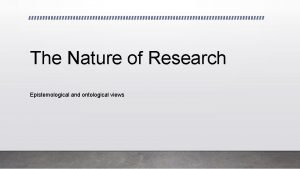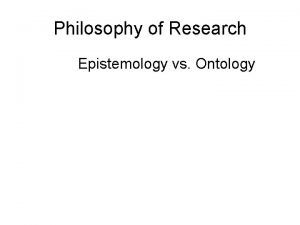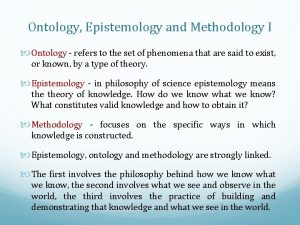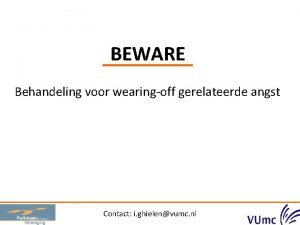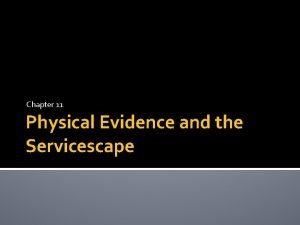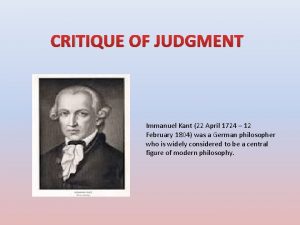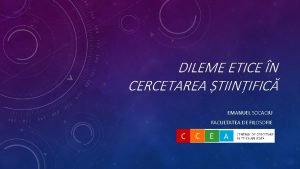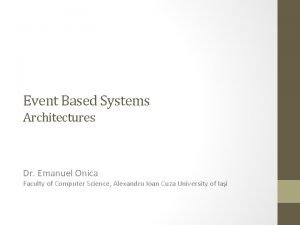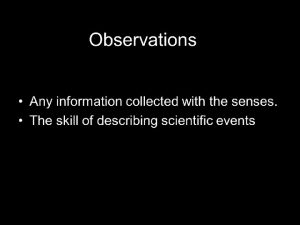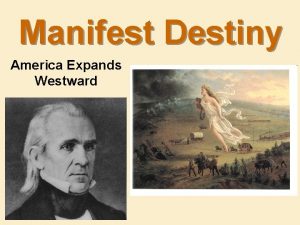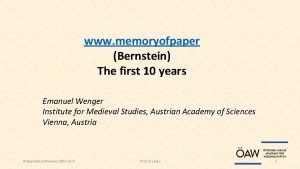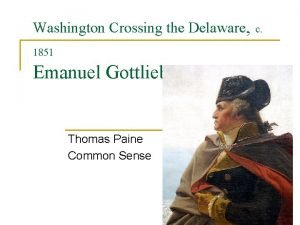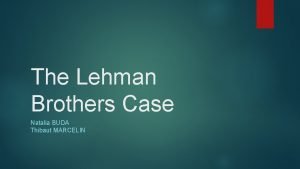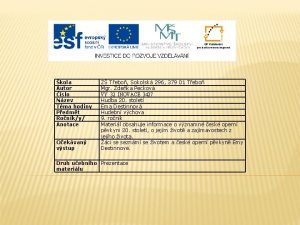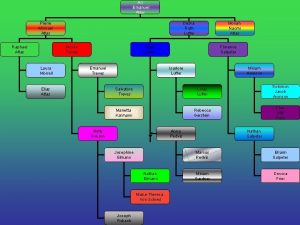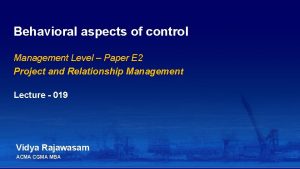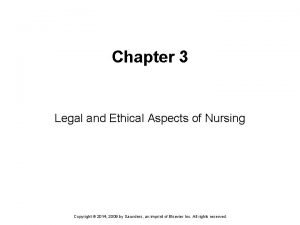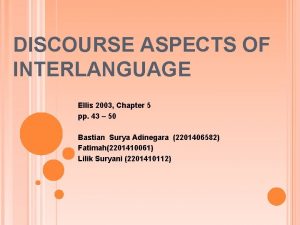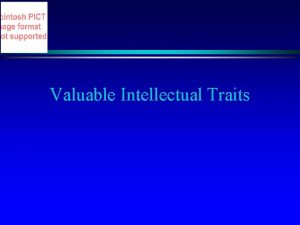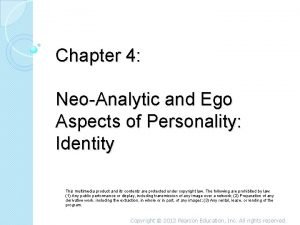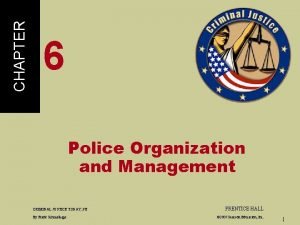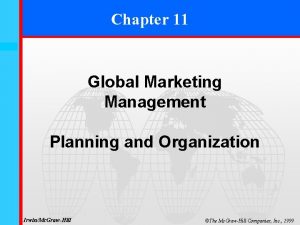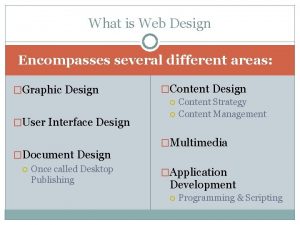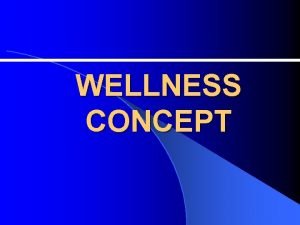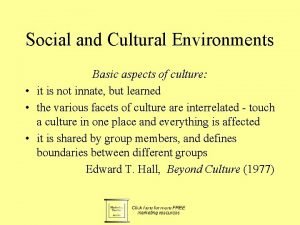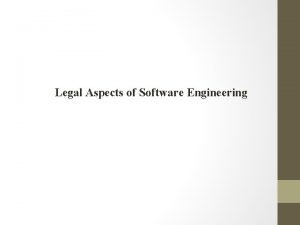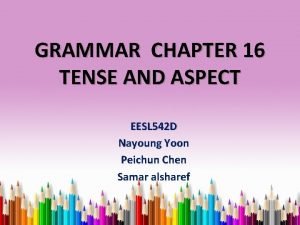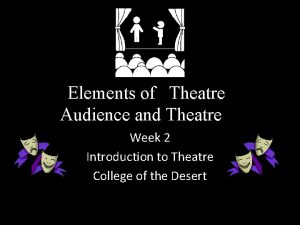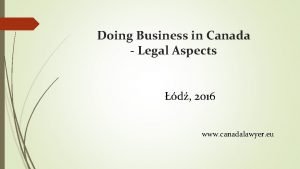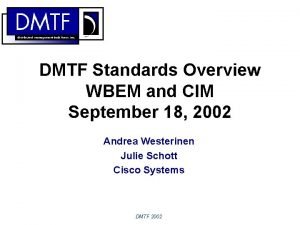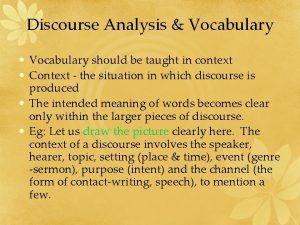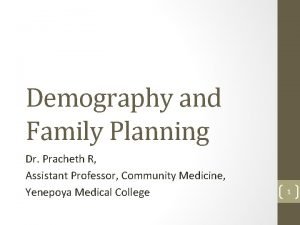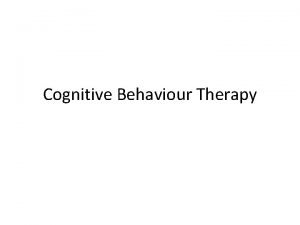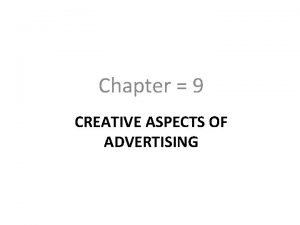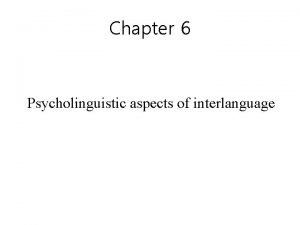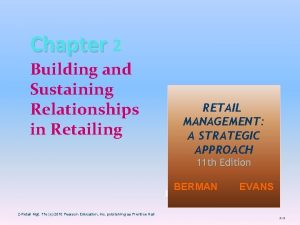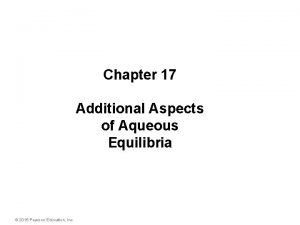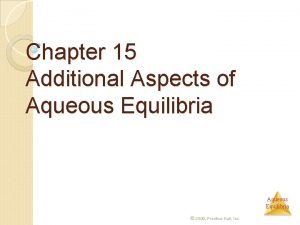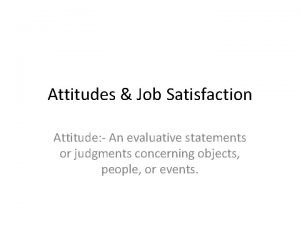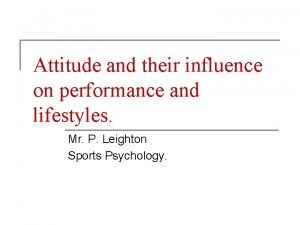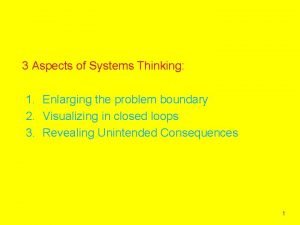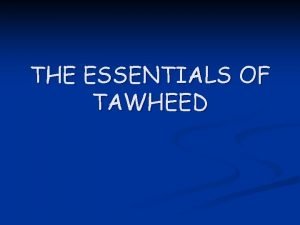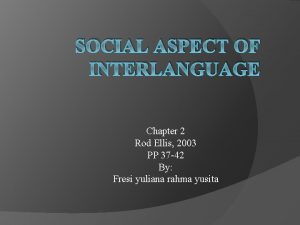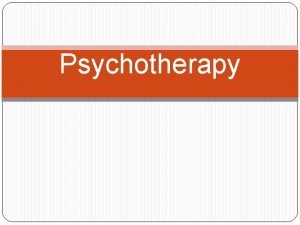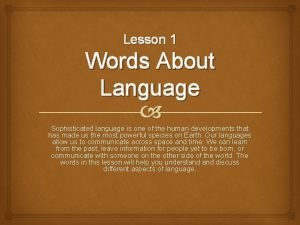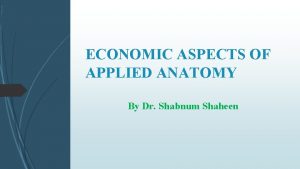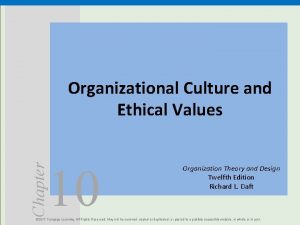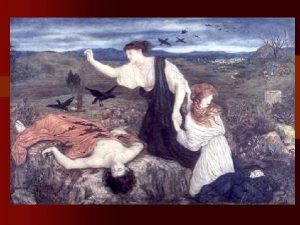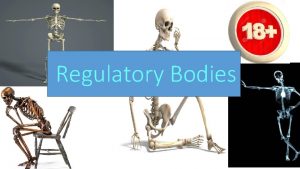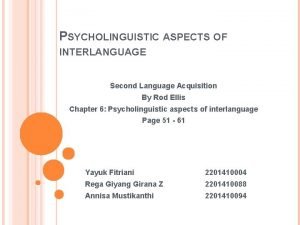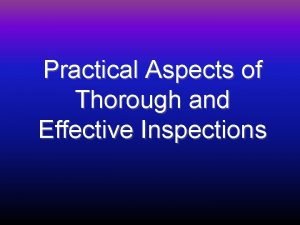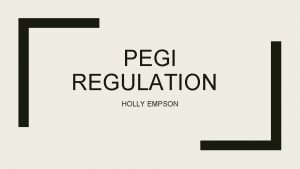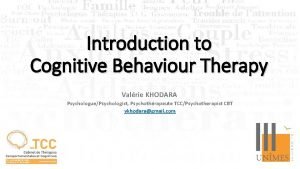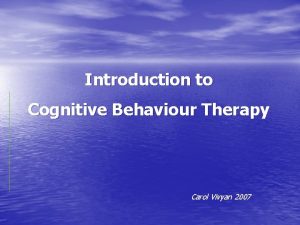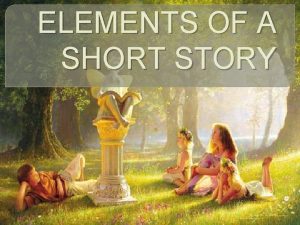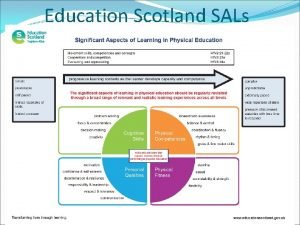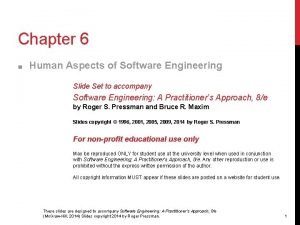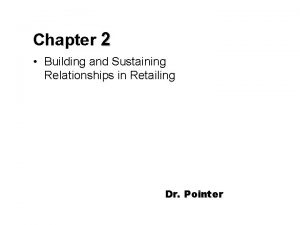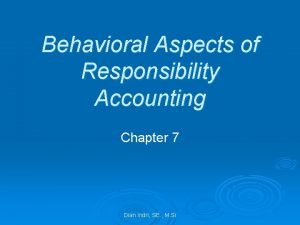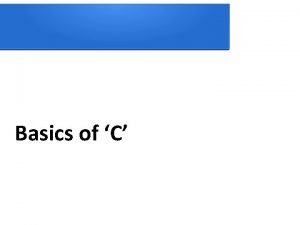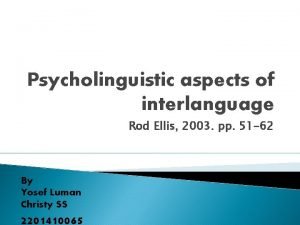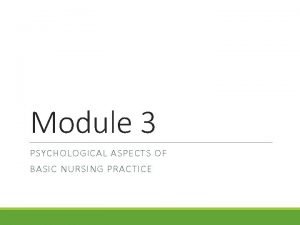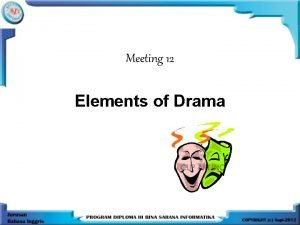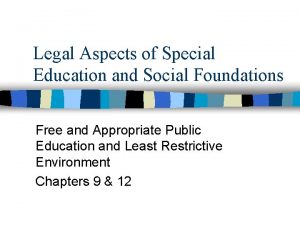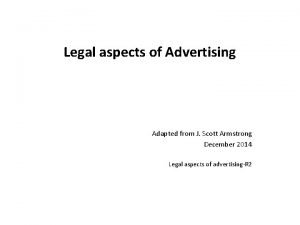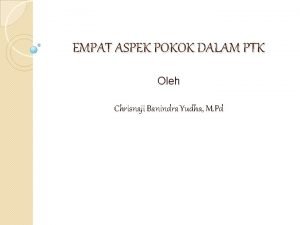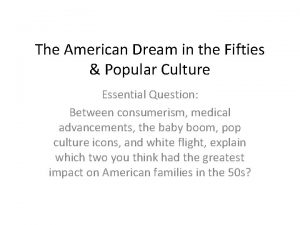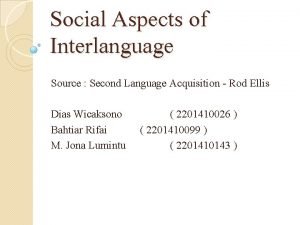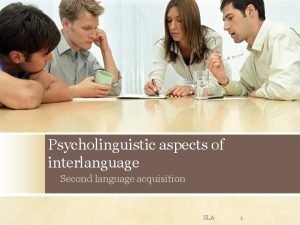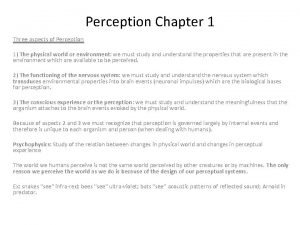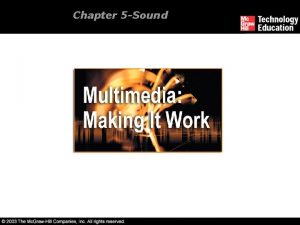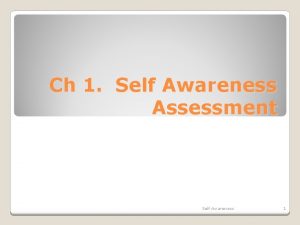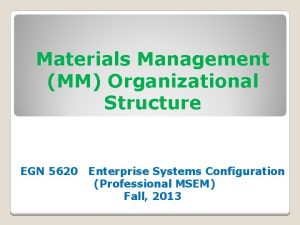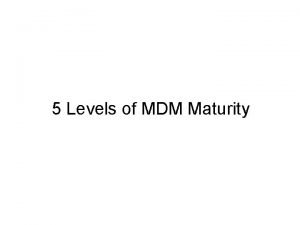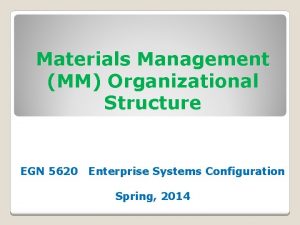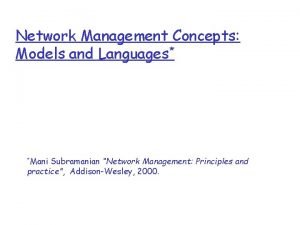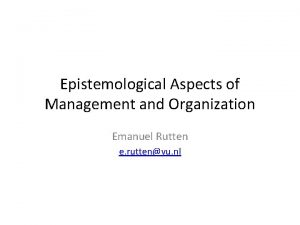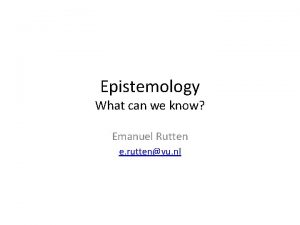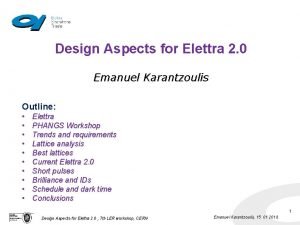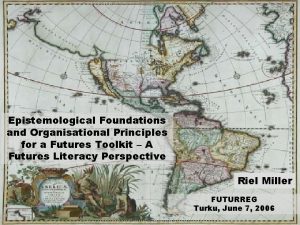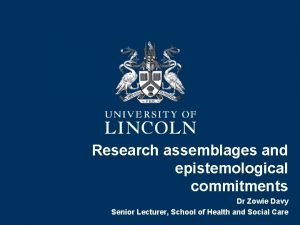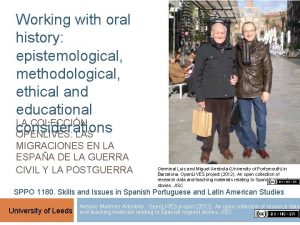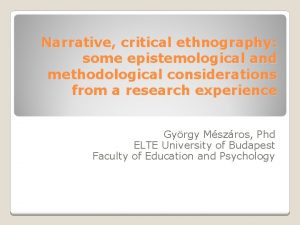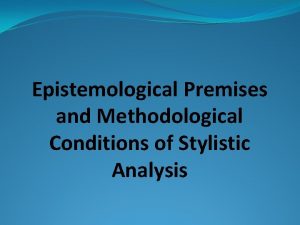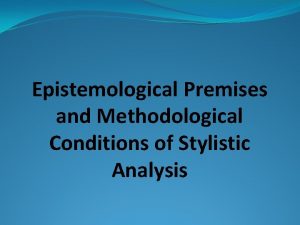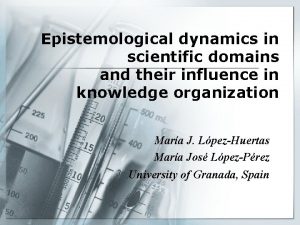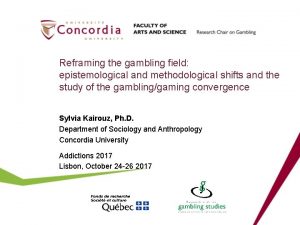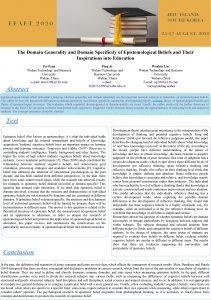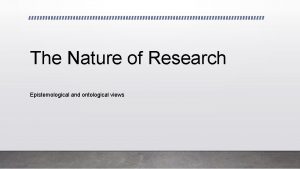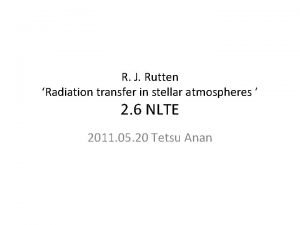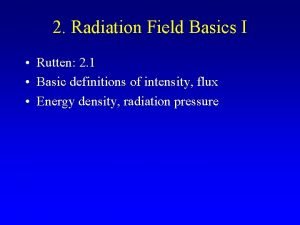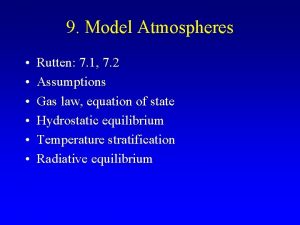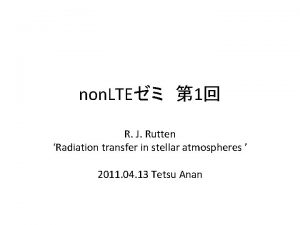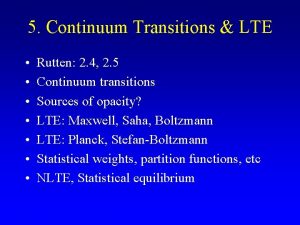Epistemological Aspects of Management and Organization Emanuel Rutten

























































































































































- Slides: 153

Epistemological Aspects of Management and Organization Emanuel Rutten e. rutten@vu. nl

Literature and Schedule • Literature – Louis P. Pojman, What can we know? An introduction to theory of knowledge (Belmont: Wadsworth 2001), Second Edition – Reader on Virtue Epistemology for Business (four articles on BB) – A. Henriques, Corporate Truth (London: Earthscan 2007) • Schedule – – – Wk 6 (Tuesday: Pojman 1 and 2 / Thursday: Pojman 3 and 4) Wk 7 (Tuesday: Pojman 5 and 10 / Thursday: Pojman 11 and 12) Wk 8 (Tuesday: Reader Battaly / Thursday: Reader Baehr) Wk 9 (Tuesday: Reader De Bruin / Thursday: Student presentations) Wk 10 (Tuesday: Henriques 1 -4 / Thursday: Henriques 5 -7) Wk 11 (Tuesday: Henriques 8 -11 / Thursday: Henriues 11 -14)

Pojman Chapter 1: What Can We Know?

Three different types of knowledge • Knowledge by Acquaintance – Having direct experiental access to either an object or a perception • Objectual knowledge by Acquaintance (I know that tree across the street) • Perceptual knowledge by Acquaintance (I know my perception of a tree) • Competence Knowledge (‘skill’ knowledge, ‘tacit’ knowledge) – Knowing how • Unconscious competence knowledge (I know how to ride a bicycle) • Conscious competence knowledge (I know how to program a computer) • Propositional Knowledge (descriptive knowledge) – Knowing that some proposition is true (I know that Paris is the capital of France; I know that snow is white, I know that 2 is a prime number) A proposition is the meaning of an assertoric sentence. An assertoric sentence is a sentence that purports to assert a truth (e. g. , “It rains”)

Three different types of knowledge (cont. ) • Epistemology is primarily about propositional knowledge • Is all propositional knowledge based on acquaintance? On the one hand this seems plausibly true … – I know that the tree in front of me is green – I know that I have a headache – I know that snow is white But on the other hand one may seriously doubt this … – I know that a logical contradiction cannot occur – I know that ‘not-P’ and ‘P or Q’ entails Q – I know that 2 is a prime number

Theories of truth • Clearly, knowledge entails truth – If I know that P, then P is true (falsehoods cannot be known) – Truth is a desideratum (stronger: the goal) of our cognitive processes • Three main theories of truth in the history of philosophy – The Correspondence Theory of Truth – The Coherence Theory of Truth – The Pragmatic Theory of Truth – (The Identity Theory of Truth) – (The Event Theory of Truth)

The Correspondence Theory of Truth • A proposition is true if and only if it corresponds to the facts • The fact is the truth-maker of the proposition. It verifies or confirms the proposition. The proposition is a picture of the fact. • There is a profound difference between propositions and facts – Proposition are bearers of truth. They are either true or false – Facts (states of affairs) do not have truth values (true, false). They just are. • Correspondence is vague: similarity, resemblance, isomorphic? • To avoid vagueness, use this schema: Proposition P is true iff P – “It rains” is true iff it rains – “Paris is the capital of France” is true iff Paris is the capital of France – “Mark’s car is blue” is true iff Mark’s car is blue

The Correspondence Theory of Truth (cont. ) It rains Proposition EXPRESSES Truth-bearer IS HAS Truth-value True (False) Sentence “Het regent” (“il pleut”, “es regnet”) MAKES TRUE Truth-maker IS Fact

The Correspondence Theory of Truth (cont. ) It rains EXPRESSES Sentence (Statement) “Het regent” (“il pleut”, “es regnet”) Note: Items between brackets indicate alternatives Proposition (thought, belief) Truth-bearer IS HAS Truth-value True (False) MAKES TRUE Truth-maker IS Fact (event, object)

The Correspondence Theory of Truth (cont. ) • Not all true propositions are easily analysed in terms of correspondence • For, what are the corresponding facts in case the following propositions are true? – – – The number two is prime Slavery is wrong ‘The Nachtwacht’ is a beautiful painting The law of gravity holds The Correspondence Theory of Truth is adequate • If truth is ‘merely’ correspondence, do we then ever capture the truth at all? • That is why some philosophers opt for the ‘Identity Theory of Truth’

The Coherence Theory of Truth • A proposition is true iff it coheres with a system of other propositions. It is true by virtue of its legitimate membership of the system (‘mutually supportive’) • Coherence can be understood in terms of (a) explanatory power or (b) logical entailment, that is, the true proposition (a) explains or (b) logically implies (all) other propositions of the system (and vice versa) • A weaker criterium would be (c) consistency. The true proposition just needs to be logically consistent with the other propositions • Adherents of coherence theory give either metaphysical (“There are no facts”) or epistemological reasons (“We can’t get out of our beliefs”) for it. • Opponents point out that there can be incompatible coherent systems, and also fairy tales cohere. Truths must somehow correspond to the facts. Coherence is necessary, not sufficient.

The Pragmatic Theory of Truth • A proposition is true iff believing it is useful in the long run and on the whole course. Truth is synonymous with practical success • Pragmatic theory is form of cognitive relativism. What works for you might not work for me. • Pragmatic theory violates our intuïtions. Delusions might come out true if believing them results in practical success • Misrelationship between true belief and mind-independent facts (= the way things are independent of our beliefs) – Pragmatists (and coherentists) might say objective facts do not exist

The Pragmatic Theory of Truth (cont. ) • Pragmatists seem to conflate truth with justification. But there is a difference between a belief being true and being justified – We may be justified in believing propositions that are not true – We may not be justified in believing propositions that are true • Pragmatism seems ultimately to depend on an objective notion of truth. For to adequately say that some belief works, it must be the case that the proposition ‘It works’ corresponds to facts • So it seems better to reserve the term ‘truth’ for propositions that communicate objective facts of reality (correspondence)

Relationship between ‘knowledge’ and ‘belief’ I. Knowledge and belief could be considered two different states – Knowledge: infallible, self-evident, absolute certain, guaranteed truth – Belief: fallible, not self-evident, mere opinion, some level of probability II. Knowledge can be considered as being a type of belief – Knowledge is justified true belief (JTB) – Subject S knows proposition P if and only if (i) S beliefs P, (ii) S has a sufficient justification for P and, (iii) P is true • (Epistemic) justification for a certain belief refers to the reasons, grounds or evidence for holding that belief, for thinking that the belief in question is true. • How strong must justification be? How much evidence is needed to turn true belief into knowledge? Absolute certainty?

Can we know anything at all? • Skepticism is theory that we do not know (most of) the things we claim to know • According to weak skepticism we can know logical and mathematical truths, but not empirical and metaphysical truths – Empiricism is theory that we can know logical, mathematical and empirical truths, but not metaphysical truths (very weak skepticism) • According to moderate skepticism we cannot know logical, mathematical, empirical and metaphysical truths • According to radical skepticism we cannot know anything, not even whether we can have knowledge!

How do we obtain knowledge? • Rationalists believe that reason is sufficient to discover truth • Empiricists hold that all knowledge originates through sense perception (seeing, hearing, touching, tasting, smelling, etc. ) • Plato was the first to put forward a full rationalist theory – The particular objects of sense perception are subject to becoming, change and decay and thus cannot be proper objects for knowledge – Knowledge goes beyond the changing particular (the world of becoming) and grasps universal ideas or forms. These forms exist in a transcendent, perfect, eternal, unchangeable realm of ideas (the world of being) – We know forms since we have innate ideas. Knowledge is recollecting what we have learned when our soul was present in the world of being. – Plato provides the example of teaching geometry by bringing up knowledge from within, by recalling the eternal mathematical forms

The A priori/A posteriori distinction (for knowledge!) • A priori knowledge is acquired independently of sense perception. It is obtained by reason, direct intuïtion or conceptual analysis alone. • Sense experience is not needed to acquire a priori knowledge (although the concepts may of course be empirically obtained!) – – 2+2=4 Not (P and not-P) All bachelors are unmarried Nothing that is green all over is red somewhere • A posteriori knowledge (empirical knowledge) – Knowledge that must come to us from experience, from empirical observations – – Some bachelors are unhappy The table in front of me is empty The king of the Netherlands is named Willem Alexander Cold Fact was the debut album of American singer-songwriter S. Rodriquez

The analytic-synthetic distinction (for propositions!) • Analytic propositions are conceptual truths. They are true solely by virtue of the meaning of the terms in the proposition – All mothers are women – All bachelors are unmarried (Indeed, in these two ‘predicate/subject’-statements the predicate [e. g. unmarried] is contained in the definition of the subject [e. g. bachelor]) • Analytic propositions do not provide new information • Synthetic propositions (whether true or false) do provide new information. These propositions are not conceptual truths – Dante Alighieri wrote ‘La Divina Commedia’ – The world began to exist a finite time ago – Everything that begins to exist has a cause for its existence

Combining both distinctions • In principle we can distinguish four categories of knowledge – – A priori analytical knowledge (e. g. , ‘All bachelors are unmarried’) A posteriori analytical knowledge (this category is of course empty!) A posteriori synthetic knowledge (e. g. ‘John is a bachelor’) A priori synthetic knowledge (Is this category empty? Kant thought not!) • According to empiricists all our knowledge is either a posteriori synthetic (‘Ed’s car is blue’) or a priori analytic (‘ 1+1=2’). Hence, empiricists deny the existence of a priori synthetic knowledge • Kant holds that we in fact do have synthetic a priori knowledge. – Everything that begins to exist has a cause for its existence – 1+1=2 (Kant holds that mathematical propositions are synthetic) – Slavery is morally wrong

Annex: An objection against correspondence • Davidson’s 1969 Slingshot argument. It can be presented as follows 1. "Snow is white" is true 2. "Snow is white" corresponds to the fact that "Snow is white" 3. "Snow is white" corresponds to the fact that "(The X such that "X is identical with Plato” and “Snow is white”) is identical with Plato" 4. "Snow is white" corresponds to the fact that "(The X such that "X is identical with Plato” and “Grass is green”) is identical with Plato" 5. "Snow is white" corresponds to the fact that “Grass is green“ 6. Conclusion (5) is absurd. 7. Correspondence theory must be false • Is this argument convincing? Or not?

Some further questions for discussion • Are there sources for justification other than reason, and senses? E. g. , memory, testimony • Is a priori knowledge possible if all concepts come from our senses? Yes, we may need our senses to acquire the concepts that figure in the proposition, but we do not need any further appeal to our senses in order to see that the proposition in question is true • How could synthetic a priori knowledge be possible? E. g. , Kant would argue that we structure the phenomenal world according to our cognitive faculties and that all our knowledge claims are claims about the phenomenal world. • Is justified true belief sufficient for propositional knowledge? No, there are various problems (e. g. , Gettier, Lotery). See gjerutten. nl/Wat. Is. Kennis. pdf • Are there other notions of truth in addition to the discussed? E. g. , Identity Theory of Truth, Event Theory of Truth

Pojman Chapter 2: The Skeptical Tradition

The Skeptical Tradition • Ancient Skepticism – Socrates’ agnosticism (agnoia) • “We ought to investigate this” (skeptic means “to inquire”) • “There is only one thing I know and that is that I know nothing” – After Plato his Academy evolved into a school of Skepticism • ‘Academic Skeptics’ or ‘Academics’ (e. g. , Arcesilaus and Carneades) • They took Socratic agnoia as their model – In the same century Pyrrho developed an even more radical skepticism • Pyrrho denied all knowledge claims, even that we know nothing. • Pyrrhonist Sextus Empiricus called Pyrrhonism a purge that eliminates everything • Modern Skepticism – E. g David Hume (1711 – 1776)

Academic Skepticism was a response to Stoicism • Stoic cosmology and anthropology (materialistic, deterministic) – The cosmos is all there is. It is divided in (1) Logos (Reason, Fate) and (2) passive matter – Logos is the foundation of the cosmos. It is an active intelligent aether or primordial fire, acting on the passive matter. Everything in the cosmos is subject to its laws – Souls are emanations from the Logos. Goal of life is to live according to the Logos • Stoic epistemology (certain infallible knowledge from reason and perception) – Reason (argumentation and self-evident intuitions) leads us to certain infallible knowledge of metaphysical and moral truths – In perception the perceived object (e. g. , a tree) communicates itself on our mind like a seal on wax (“Certain infallible representations”) – This strong self-confident epistemology confirmed their cosmology • The Skeptic response to all this was that we are fallible (we can be mistaken). And in fact, according to them, we know virtually nothing

Pyrrhonian skepticism: considerations Ø Equipollence between sense appearances and rational arguments – “Appearance indicates that things move. Zeno’s arguments purport to show otherwise” Ø Equipollence between rational arguments for and against some thesis – “Rational arguments for God’s existence balance arguments against Gods existence” Ø Undecidability of explanations for states of affairs – “There always competing explanations for a fact. We cannot decide which one is correct” Ø Relativity of beliefs – “Experiences differ between men” “If being-wise means the same to all, why dispute? ” Ø Senses are unreliable Ø Reasoning is either circulair or involves an infinite regress

Pyrrhonian skepticism: suspension of judgement • Therefore, we must purposefully withhold assent regarding any opinion (epoche). We have to doubt and refuse any opinion. This results in deliberate agnosticism (‘inner silence’ or aphasia). • For skeptics doubt is the means to the ultimate end of happiness – The skeptical version of happiness is ataraxia (tranquillity, calmness, absence of worries) – By doubt one ceases to worry. Epoche liberates us from fear. Aphasia leads to ataraxia.

Does the skeptic have beliefs? • Academic and Pyrrhonian skeptics deny knowledge and reject beliefs. – Academic’s are less radical in that they affirm to know that we know nothing • Academic skeptics accept the idea of probability. Certain propositions are more probable than not and therefore more action guiding • Pyrrhonians also reject the idea of probability. They only accept living “as if” a proposition were true (without strong inclination) – They reject probabilism & hold that we don’t even know that we know nothing – For Pyrrhonians the Academic’s are only half-skeptics (“bastarized skepticism”) – Nevertheless, Pyrrhonians still accepted “as if’s” to enable practical living • Modern skeptics deny knowledge, but not beliefs.

Pojman Chapter 3: Modern Skepticism

Modern skepticism: Descartes experiment of extreme doubt • In his Meditations Descartes (1596 -1650) places all his previous beliefs in doubt in order to build a secure house of knowledge – First, sensory experience has been found to be an unreliable witness, so I can never be sure that it is not presently deceiving me. Therefore, I cannot trust it • Yet, it might still be possible to identify sufficient conditions for trustworthy sense perception. – Second, I could be dreaming or hallucinating. So I still do not know whether any of my present perceptual beliefs are true. • But even in that case we seem still to know logical (~[p&~p]) and mathematical (1+1=2) truths. – Third, an ‘evil demon’ could deceive me. And if so, I could be wrong not only about my perceptual beliefs, but also about my logical and mathematical beliefs

Modern skepticism: Descartes experiment of extreme doubt (2) • Descartes thought he could defeat the skeptic: Cogito Ergo Sum. I think, therefore I am. I cannot doubt that I exist. That I exist is certain! • Descartes argues that God must exist (as being the maximally perfect source of my idea of maximal perfectness) and is good (since maximally perfect). • Therefore God will not deceive me and thus whatever is clear and distinct is true and cannot be doubted. So skepticism is (largely) defeated, says Descartes.

Modern skepticism: David Hume’s local skepticism • Hume’s skepticism is not global. For he concedes that we can know the truths of mathematics and logic as well as memory reports and reports about our internal and external impressions (passions and perceptions) – He does not invoke a possible Cartesian Evil Demon scenario • He has it that all our beliefs (ideas) are caused by impressions. We can never get behind our impressions to check how the world really is (if it exists at all) • Therefore we do not have any metaphysical knowledge. We cannot ground beliefs in causes, induction, self, God, free will in impressions.

David Hume’s local skepticism: causation & induction 1) Hume attributes our belief in causality to our experience of a regular conjunction of events. Belief in causality is result of a psychological habit – We do not know whether the same cause will always have a like effect – We have no knowledge of a necessary connection between cause and effect 2) Hume argues that we cannot give a rational justification of induction -- Induction is inference by extrapolation: “The sun will rise, because it always did” -- Induction cannot be grounded since in order to ground it we need it (circular) -- After all, how do we know that we may extrapolate? The implicit assumption is that the laws of nature are uniform. But how do we know this? By extrapolation! Yet, one may respond to (2) that induction “works” and that it is unavoidable in most (if not all) our deliberations about the world. There is no alternative. And why would this practical justification of induction not count as an epistemic justification?

David Hume’s local skepticism: Self & God 3) Hume calls the notion of (a persistent) self into question – If all our knowledge comes through impressions, where is the impression that produces the notion of a self? Moreover, of a self that persists through time? – There are impressions of heat, cold, etc. , but not of self. There is just a bundle of impressions that changes through time. No impression is constant and invariable 4) Hume claims that all classical rational arguments for the existence of God fail. So, the idea of God must be merely an imaginative construction from simple ideas (power, etc. ) based on initial basic impressions.

David Hume’s local skepticism: Genuine free will 5) When we act we feel that we are in control, that we could have chosen to act otherwise, that is to say, that we have genuine free will – But according to Hume this feeling is unsupported by critical reflection. – Human choice is as regular and uniform, involves constant conjunction just as much, as any part of nature. Hence it is caused. There is no genuine free will. – Thus we do not have genuine free will. – We have free will in a compatibilist sense. For Hume ‘free will’ means “a power of acting or not acting, according to the determinations of the will”. So I am free if I would have acted otherwise if I had chosen to do otherwise. I can do what I want (no external constraints), but I can’t choose what I want (causal determinism) To conclude: Hume concludes that we know very little indeed. Yet, a natural propensity prohibits perseverance in skepticism and forces us to act

External World Skepticism • Take the following skeptical argument: (a) If I know that I have an apple in my hand, then I know that I am not hallucinating. (b) I don’t know that I am not hallucinating. (c) Therefore, I don’t know that I have an apple in my hand • The anti-skeptic might reverse the argument: (a) If I know that I have an apple in my hand, then I know that I am not hallucinating. (b*) I know that I have an apple in my hand. (c*) Therefore, I know that I am not hallucinating • But this is not sufficient to refute the skeptic. After all, the skeptic may respond that we have arrived at a situation of equipollence. We have to suspend judgement. So I still don´t know that I have an apple in my hand.

External World Skepticism (cont. ) Let p = “I have an apple in my hand” Let q = “I am not hallucinating” K… = “I know that …” -> = logical entailment (‘implies’) & = logical conjunction (‘and’) Skeptic argues… Anti-Skeptic argues… 1. Kp & K(p->q) -> Kq 2. Not-Kq 3. K(p->q) 4. Therefore, not-Kp 1. Kp & K(p->q) -> Kq 2. Kp 3. K(p->q) 4. Therefore, Kq Equipollence, thus Skeptic “wins”. Is there a way out?

External World Skepticism (cont. ) Skeptic argues… Anti-Skeptic argues… 1. Kp & K(p->q) -> Kq 2. Not-Kq 3. K(p->q) 4. Therefore, not-Kp 1. Kp & K(p->q) -> Kq 2. Kp 3. K(p->q) 4. Therefore, Kq

External World Skepticism (cont. ) Skeptic argues… Anti-Skeptic argues… 1. Kp & K(p->q) -> Kq 2. Not-Kq 3. K(p->q) 4. Therefore, not-Kp 1. Kp & K(p->q) -> Kq 2. Kp 3. K(p->q) 4. Therefore, Kq Robert Nozick denies premise (1): “It is possible that Kp, K(p->q) and Not-Kq is the case” But is it possible to deny the seemingly obvious premise (1)?

External World Skepticism (cont. ) • Let’s revisit a well-known definition of knowledge (“Justified True Belief”) Kx if and only if (I) x is true (II) I believe x (III) I have a sufficient justification for x Knowledge is “Justified True Belief”

The truth-tracking response to skepticism • Nozick introduces an alternative conception of knowledge (“truth tracking”) Kx if and only if (I) x is true (II) I believe x (III) If x were not true, I would not believe x (IV) If x were true in slightly different circumstances, I would still believe x Knowledge is “True Belief that Tracks Truth”

The truth-tracking response to skepticism (cont. ) • Nozick’s “truth tracking” definition of knowledge Kx if and only if (I) x is true (II) I believe x (III) If x were not true, I would not believe x (IV) If x were true in slightly different circumstances, I would still believe x Let p = “I have an apple in my hand” Let q = “I am not hallucinating”

The truth-tracking response to skepticism (cont. ) • Nozick’s “truth tracking” definition of knowledge Kx if and only if (I) x is true (II) I believe x (III) If x were not true, I would not believe x (IV) If x were true in slightly different circumstances, I would still believe x • Now, suppose p is true and I believe p. It follows that Kp and K(p->q) • So, what about Kq? q is true and I believe q. If q were not true, so that I would be hallucinating, then it does not follow that I would not believe q. For, if I am hallucinating, I could very well believe q! It follows that not-Kq • But then we must indeed reject Kp & K(p->q) -> Kq. Is the skeptic defeated?

The truth-tracking response to skepticism (cont. ) • The answer is ‘no!’. For Nozick’s conception of knowledge fails. Take the following counter example (B. Garrett). Suppose Ad and Bart are brothers. Proposition a is that the father of Ad is a philosopher. Proposition b is that the father of Bart is a philosopher. Suppose I use the unreliable method of believing a if I’m informed that b is true. Suppose that b is true and that I’m informed that b is true. Suppose it is unknown to me that Ad and Bart are brothers, so in fact a is true. Surely I do not know that a! Ka holds because (I) – (IV) are all met, but a clearly cannot be knowledge for me because it relied on the random unknown fact of A and B being brothers. • We thus have to reject Nozick’s account of knowledge. The skeptic survives.

The relevant alternatives response to skepticism • One may invoke Fred Dretske’s relevant alternatives model to refute skepticism. This model is a form of contextualism. Whether we know something depends on the context. - When I go to the supermarket I know that the apple I picked is an apple - When I have been told that some apples are not real apples, I don’t know that the apple I picked is an apple • Subject S knows proposition P in context C iff S is able to eliminate all non-P alternatives that are relevant in context C

The relevant alternatives response to skepticism (cont. ) • How does Dretske’s relevant alternatives contextualism refute skepticism? In ordinary life context we know that we have an apple in our hands. We can exclude all relevant alternatives for this context (no peer, not plastic apple, etc. ) In remote theoretical context we do not know that we have an apple in our hands. We cannot exclude all relevant alternatives for this context (we might be hallucinating, there might be an evil demon deceiving us, etc. ) • So skepticism does not seem to destroy our ordinary life knowledge. • Yet, Dretske’s model has problems: – Within many contexts it is not always clear what the relevant alternatives are – The more I reflect, the less I know. “Reflection destroys knowledge” – Knowledge becomes extremely unstable

The ‘commonsense defense’ against skepticism • One may refute the skeptic by shifting the burden of proof to the skeptic. That is, we may claim to know our commonsense believes unless a sufficient defeater for such a belief is provided. – Commonsense is innocent until proven guilty. Commonsense is the default I can know that there is an external world, because I can know that two human hands exist. How? By holding up my two hands, and saying, as I make a certain gesture with the right hand, “Here is one hand”, “and here is another” (G. E. Moore) • Norman Malcolm distinguishes between weak and strong knowledge – Weak knowledge claims: Claims which I admit I could be wrong • The weak prime conjecture has been solved; The cosmos is 13. 8 billion years old – Strong knowledge claims: Claims about which we cannot imagine being wrong • Moorean knowledge claims, such as that I have two hands • For strong claims burden of proof is on skeptic: Skeptic is to provide defeater

A further question for discussion • We have seen that Nozick’s conception of knowledge faces counterexamples. Earlier we discussed the ‘Knowledge is Justified True Belief (JTB)’ notion of knowledge. Is JTB facing counterexamples as well? Let’s consider two cases. 1. Mark perceives a ‘perfect’ sheep-like rock on a hill and forms the belief that there is a sheep on the hill. Now, unbeknownst to Mark there is actually a sheep behind that rock on the hill. 2. Mary engages in a lottery that millions of people attend and will have only one winner. Shortly before the result of the lottery is published Mary forms the belief that she will not win the lottery (based on probability reasoning). Now, shortly before she formed this belief she did in fact not win the lotterly.

Pojman Chapter 4: Perception

Perception and the external world • We are confronted daily with many illusory appearances – – We see parallel railroad tracks as if they converge in the distance A coin looks elliptical when viewed from a certain angle A straight stick placed halfway in water looks bent Stars appear as tiny sparks in the heavens • So, how do we discriminate between true and false appearances? • Aren’t appearances numerically different from external objects? – It seems that in perception, the ‘impression’ (first ‘item’; in the mind) is to be distinguished from the thing itself (second ‘item’; external to the mind) – But if so, what guarantees that any of our impressions resemble things themselves? – Further, what guarantees that there is an external world that grounds our impressions at all?

Three theories of perception • Direct (Naive, Commonsense) Realism – The immediate object of perception is a mind-independent object that exists independently of our awareness of it. – We have immediate adequate knowledge of the mind-independent external world • Representationalism – – • The immediate object of perception is a sense datum or sense impression Sense data cannot exist apart from our awareness of it. Reside in our mind (colors, etc. ) Sense data are caused by objects that exist independently of our awareness We have only mediate (in)adequate knowledge of the mind-independent external world Phenomenalism – – The immediate object of perception is a sense datum or sense impression Sense data cannot exist apart from our awareness of it. Reside in our mind (colors, etc. ) Objects are constructions of sense data. There is no mind-independent external world. Is there another option? Yes, the immediate objects of perception are sense data, and we simply do not know whethere is an external world at all, or (even if there is one) whether our impressions adequately resemble it or not.

John Locke’s representationalism • All our knowledge derives ultimately from sense experience • The mind is initially a white sheet (tabula rasa) without any ideas. • Locke embraces a causal theory of perception – – Objects in the External World come physically into contact with our sense organs Our physical sense organs send physical signals to our physical brains Our brain transforms these physical signals into non-physical events These non-physical events are perceived as mental ideas in our mind • We aren’t directly aware of the object, only of representation of the object (idea)

John Locke’s representationalism (cont. ) • Locke distinguishes two main types of qualities – Primary qualities are inseparable from the external objects (e. g. , solidity, extension, figure, mobility, number). Our ideas of them truly represent the objects – Secondary qualities are not in the thing, but only ideas in our minds (e. g. , colour, taste, sound) • All there is to objects are their primary qualities. – By virtue of its primary qualities an object has the power to initiate secondary qualities – By virtue of its primary qualities an object has dispositional qualities (actually a third type of quality!) such as flammability, fragility and solubility • Locke’s representationalism might lead to skepticism. If Locke is right we never have direct access to the objects themselves, only to representations (ideas) in our mind. So, how do we know if these ideas faithfully represent the external world? In fact, is there an external world at all?

Berkeley’s attack on Locke’s representationalism • According to Berkely Locke’s primary/secondary qualities distinction is weak. The primary qualities are no more in the objects than the secondary ones. Both types of qualities are mind-dependent. Berkeley raised four objections to Locke. 1. “If heat and cold are affections only in the mind, because the same body which appears cold to one hand seems warm to another, why may we then not as well argue that figure is only in the mind, because the same body which appears circular (or small) to one seems elliptical (or large) to another” 2. Perceptions cannot resemble physical objects. “An idea can be like nothing but an idea” (logical problem) 3. Locke needs the notion of substance (the bearer of primary qualities). But what is the difference between “something I know not what” (Locke’s notion of substance) and nothing at all? 4. Locke’s causal theory of perception is an explanatory failure. How could physical events produce radically different mental events (e. g. , light waves the sensation of redness)?

Berkeley’s own solution to how we know the external world • Berkeley denied the existence of matter. Only minds and mental events exist (idealism, classical phenomenalism). Physical objects are thus simply mental events • Intractable problems disappear: What is substance? How can the physical cause the mental (and vice versa)? How can we have knowledge of the external world? • All qualities (shape, colour, etc. ) are secondary. They are real because they are being perceived: esse est percipi • Hence, a physical object would cease to exist if not perceived. But what then happens to a tree if it is not perceived by us human beings? Does it cease to exist? No, God sees it! • Locke could not show that God exists necessarily: Lock’s system can be interpreted purely naturalistically. But in Berkeley’s system God is necessary. God is needed to keep our world intact. • God communicates directly with our finite minds by the mediation of ideas, thus constituting that we call the external world (the world of trees, cars, etc. ).

Contemporary phenomenalism • Nothing exists except sensations and the minds which perceive them • The physical world is a construct of ideas, it is a mental construction • Differs with Berkeley in that it doesn’t posit God as necessary “All laws of science, including the law of causation (‘observed regularities’) , apply only to the world of sense and not to anything beyond it. The realist view of a mind-independent world behind the perceived world is an unjustified faith” (Stace) • Bertrand Russell (1872 -1970) is a representational realist. Our knowledge of physical objects is inferred from the sense data in our brain. • Why would he not be a phenomenalist?

Some objections against phenomenalism 1) The stick in the water appears bent and we all agree that this is an illusion. But the phenomenalist can admit no difference between appearance and reality. The real-unreal distinction vanish if there are only impressions. Phenomenalist may respond that she accepts a pragmatic or coherence truth-theory 2) Sensations are flighty but material objects are permanent. I don’t annihilate this room and all of you every time I close my eyes Phenomenalist may respond that the lacunary nature of the given is in itself not a problem. A cube is never perceived according to all its faces at once; it always retains something non-given at the heart of givenness 3) Causal interaction seems undermined by phenomenalism. Ideas are inert and can do nothing. A room cannot be warmed by impressions. Phenomenalist may respond that we have to redefine causation as ‘regular succession’

A return to realism • Phenomenalism leads to solipsism. Why are other people not mental constructs as well? • D. M. Armstrong, John Searle and William Alston have returned to realism: In perceiving we do encounter the world, though always through the interpretative powers of the mind (so no naive realism!). • Sense data are unnecessary: Perception can be understood as ‘taking in’ objects in the world. • Sense data are paradoxical: How are indeterminate sense data supposed to represent determinate objects?

The adverbial theory of perception (Chrisholm, Audi) • We experience in certain ways. Experience is a way of being appeared to – When I see a red book “I am appeared to redly and bookishly” – When I see a blue ball “I am appeared to bluely and ballishly” • This theory does not need sense data. It claims direct contact with objects in the external world (‘direct realism’) • Still, two problems seem to drive us back to representationalism or phenomenalism – The need to distinguish veridical from illusory appearances – The fact of light and sound waves taking time to travel to our brains

Annex: Towards the meta-epistemic (1) Realism {both Direct-Realism and Representationalism} There are minds and mind-independent objects. Minds can know these objects. (2) Kantianism There are minds and mind-independent object. Minds cannot know these objects. (3) Idealism {Phenomenalism} There are only minds. Objects are mind-dependent constructions and known as such. (4) An epistemic stance There are minds. We cannot get “outside” our minds. So we do not know whethere are mind-independent objects. And if there are such objects, we do not know whether we can know them. (5) A meta-epistemic stance The distinction between ‘minds’ and ‘mind-independent objects’, between the ‘inside’ and the ‘outside’, is only justified as a human-relative distinction. The world-in-itself might not even consist of ‘minds ‘and ‘mind-independent objects’. The distinction between ‘inside’ and ‘outside’ might not even apply to the-world-in-itself. We will never be able to access the world-in-itself. Everything we say can only be justified as a claim about the-world-for-us. Even the very distinction between world-for-us and world-initself is merely justified within the-world-for-us. ( e. g. , http: //is. gd/Gg. H 9 Ne )

Annex: Towards the meta-epistemic (cont. ) (1), (2) (3) (4) Outside (objects) Outside (? ) (objects) Inside (mind) (5) Outside (objects) (? ) Inside (mind) World-for-us World-in-itself

Pojman Chapter 5: What Is Knowledge? An Analysis

Tripartite Analysis • What are the criteria for knowledge? According to the tripartite analysis the following three criteria are necessary and sufficient for ‘S knows P’ – S believes that P (psychological criterium) – P is true (ontological criterium) – S’s belief that P is justified (epistemological criterium) • In short, knowledge is justified true belief (JTB). Already Plato proposed JTB. • In 1963 Gettier argued that these three criteria are together not sufficient for knowledge. Gettier examples show that more is needed for knowledge Smith and Jones have applied for a job. Smith has strong evidence for his belief “Jones gets the job and Jones has ten coins in his pocket”. This proposition entails “The man who gets the job has ten coins in his pocket”. Smith believes this as well. Now, unbeknown to Smith, he gets the job and he has ten coins in his pocket. For Smith JTB is satisfied. But he doesn’t know that the man who gets the job has ten coins in his pocket. So JTB fails. More criteria are needed.

Tripartite Analysis • What are the criteria for knowledge? According to the tripartite analysis the following three criteria are necessary and sufficient for ‘S knows P’ – S believes that P (psychological criterium) – P is true (ontological criterium) – S’s belief that P is justified (epistemological criterium) • In short, knowledge is justified true belief (JTB). Already Plato proposed JTB. • In 1963 Gettier argued that these three criteria are together not sufficient for knowledge. Gettier examples show that more is needed for knowledge Mr. Nogot, has given S evidence that justifies S in believing “Mr. Nogot, who is in the office, owns a Ford, ” from which S concludes: “Someone in the office owns a Ford. ” But unsuspected by S, Mr. Nogot has been shamming. “Someone in the office owns a Ford” is only true because another person in the office, Mr. Havit, owns a Ford. Again, for S JTB is satisfied. But S does not know that someone in the office owns a Ford.

Quartet Solutions • Several proposals have been offered for a fourth criterion, so that the four conditions would be sufficient and necessary for knowledge (Quartet Solutions) – – the no false-belief condition the conclusive reasons condition the causal condition the defeasibility condition • On the no false-belief condition the belief of S that P must not be based on a false belief. o Smith’s belief that P (i. e. , “The man who gets the job has ten coins in his pocket”) is based on the false belief “Jones gets the job and has ten coins in his pocket”. So Smith doesn’t know P. o S’s belief that P (i. e. , “Someone in the office owns a Ford”) is based on the false belief “Mr. Nogot, who is in the office, owns a Ford”). So S doesn’t know P

No False-Belief Condition (cont. ) • But the No False-Belief Condition is not necessary. Suppose my belief that h is based on my justified belief that a, b and c are true. Suppose that any combination of two already entails h. Suppose that a is false and b and c are true. In that case my belief that h is based on the false belief ‘a and b and c’. But still I know h. • The four criteria together are not sufficient either Henry is driving in the country and correctly identifies a red barn in the distance. Unknown to him, someone has set up a series of indistinguishable red barn facades in this vicinity. Now, JTB is satisfied and his belief that he is seeing a red barn is not based on a false belief. So, all four conditions are satisfied. Still, Henry cannot be said to know that he is seeing a red barn.

Conclusive Reasons Condition • On the conclusive reasons condition the belief of S that P must be based on a conclusive reason R for P, that is, if P were false, S would not have R. o Smith’s belief that P (i. e. , “the man who gets the job has ten coins in his pocket”) is not based on a conclusive reason. He would still have the same reason even if he didn’t have ten coins in his pocket o S’ belief that P (i. e. , “Someone in the office owns a Ford”) is not based on a conclusive reason. For if P is false, S still has the same reason for P • But the conclusive reasons condition is not necessary We often apply knowledge ascriptions to situations where we may not have conclusive reasons, such as ‘I had a cheese sandwich as breakfast yesterday’. The condition is thus too strong. It “plays safe” and thus leaves out too much. • The four criteria together are not sufficient either S looks at a table on which there is a cup. S believes that there is a cup on the table. Unknown to S what he sees isn’t the cup, but a hologram caused by rays given off by the cup. JTB and fourth criterion are justified. But S doesn’t know.

Causal Condition • On the causal condition the belief of S that P must be caused by the state of affairs corresponding to P. There must be a proper connection between the fact P and the belief that P, i. e. a causal chain from P to S’s belief that P o Smith’s belief that P (i. e. , “the man who gets the job has ten coins in his pocket”) is not caused in the right way. So Smith doesn’t know P o S’ belief that P (i. e. , “Someone in the office owns a Ford”) is not caused in the right way either. So S doesn’t know that P • Suppose that you see a glass on the table before you. This causes you to belief that there is a glass on the table before you. Do you know this? On this quartet solution you do. For, JTB is satisfied and your belief is properly caused • But the causal condition is not necessary Suppose you have brought 1 of 1 billion lottery tickets and do not win. I believe that you will loss solely on a chance calculation. Given the remote possibility I knew you would lose. But my belief is not caused by the fact of you losing. It’s my knowledge of probability theory that caused my belief, and not you losing. Or, I know that 2+3=5. But is the fact that 2+3=5 causing my belief? Seems not.

Defeasibility Condition • On the defeasibility condition for S to know P there is no truth Q, such that S’s believing Q would have destroyed (‘defeated’) his justification for P o Smith’s belief that P (i. e. , “the man who gets the job has ten coins in his pocket”) is not knowledge. For “Smith gets the job” is a truth that destroys his justification for P o S’ belief that P (“Someone in the office owns a Ford”) is not knowledge. For “Mr. Nogot doesn’t have a Ford” is a truth that destroys his justification for • But Pthe defeasibility criterion (‘no defeaters’) is not necessary At the library, I see Tom Grabit and form the belief that he is there. Suppose my justified belief is true. Unbeknownst to me, Tom’s delusional demented mother says that Tom Grabit lives in France and has a twin brother living close to the library”. This truth entails the truth “Tom Grabit’s mother says Tom Grabit lives in France and has a twin brother living close to the library”, which is a defeater for my justified true belief that Tom Grabit was in the library. So I don’t know he was there. But that seems mistaken. Delusional claims of a demented mind should not result in a defeater for my justification for the belief Tom was there.

Other Attempts to Solve the Gettier Problem • All quartet solutions have problems. That is why solutions to the Gettier problem have been tried that do not merely add a fourth condition to JTB – Contextualism – Reliabalism – Pluralism • On contextualism S knows P in context C if and only if the evidence E of S can eliminate all relevant non-P alternatives in context C (context dependence) Henry and his son see a Zebra at the zoo. In this context Henry knows that the animal he is looking at is a Zebra. His evidence rules out all relevant not -Zebra alternatives. But now his son asks him whether the animal could be a mule painted with stripes. The context has changed. Suppose Henry cannot distinguish zebra’s from striped mules. There is now a relevant non-Zebra alternative Henry’s evidence cannot rule out. In this context Henry doesn’t know that the animal he is looking at is a Zebra Or, in normal contexts you know that you have two hands. But in the context of philosophical skepticism (brains in a vat, etc. ) you loose that knowledge if you cannot eliminate the new relevant skeptical alternatives.

Contextualism (cont. ) • Contextualism seems to be able to handle the Gettier examples Henry is driving in the country and correctly identifies a red barn in the distance. Unknown to him, someone has set up a series of indistinguishable red barn facades in this vicinity. In this context there is a relevant alternative that Henry’s evidence cannot rule out, namely that the barn he is looking at is a barn façade. So, indeed, he doesn’t know that he is seeing a red barn. In another case, without façade barns, that alternative is not relevant. Therefore, in that case, he does know that he is seeing a red barn. • However, contextualism still allows for cases where we mistakenly attribute knowledge to someone in a Gettier situation. It thus does not seem to work John looks at a hill in the distance. On that hill there is a rock looking perfectly like a sheep. Behind the rock there is a sheep. John looks at the rock and forms the true belief that there is a sheep on the hill. Mark stands next to John tells Mark that he sees a sheep on the hill. Mark happens to know that this is true. Mark is unaware of the sheep-like rock. In this case Mark mistakenly attributes knowledge to John, since a sheep-like rock isn’t a relevant alternative.

Contextualism (cont. ), reliabilism and pluralism • Note that we would correctly not attribute knowledge to John. For the no-sheep alternative of a sheep-less hill with a sheep-like rock cannot be ruled out by the evidence of John. And for us (not Mark) this alternative is surely relevant. • Another problem for contextualism is that it is often not sufficient clear what the relevant alternatives for a given context precisely are (too vague). • On reliabilism knowledge is no longer made dependent on the reasons one has for a given true belief. It is a form of ‘externalism’. – S knows P if and only if S’s true belief that P has been produced by a reliable process. That is, S comes to belief that P via the ‘right kind of procedure’. • In the ‘sheep on a hill’ case the belief has not been produced reliably, and therefore John indeed doesn’t know that there is a sheep on the hill • On pluralism there is no single set of sufficient and necessary conditions for knowledge. Knowledge is multifaceted. There is a core meaning that aims to capture paradigm cases – though there will borderline cases and cases that do not fit. Instead of a single characterization different tripartite or quartet characterizations of knowledge may apply to different types of cases.

Intermezzo: Internalism vs. Externalism

Internalism vs. Externalism • Internalism is a thesis about the basis of either knowledge or justified belief. Externalism is simply the negation of internalism. Internalists focus on the first person point of view. Externalists focus on the third person point of view • Three different types of internalism (and thus externalism) can be identified A. The first type actually consists of two types: A person either does have (A 1) or can have by reflection (A 2) a form of access to the basis for knowledge or justified belief. The person is aware of this basis. There are two types of A 2: – Weak form van A 2: One knows P (or is justified to believe P) if one can become aware by reflection of what is in fact one’s knowledge basis (or its set of justifiers) for P – Strong form van A 2: One knows P (or is justified to believe P) if one can become aware by reflection that some item is one’s knowledge basis (or in its set of justifiers) for P • A 1 is called direct access internalism. A 2 is called accessibility internalism • A problem for A 1 is that often we do not actually have access to our knowledge base or set of justifiers. An example includes our knowledge of our past or of facts we learned at school. In many cases we simply forgot the knowledge base or justifier, but we can still to be said to have knowledge or justified beliefs.

Internalism vs. Externalism B. Second form is about the nature of the knowledge basis of the agent (in the case of knowledge) or the set of justifiers of the agent (in the case of justified belief). On mentalism the knowledge base (or the set of justifiers) have to be mental states of the agent, such as experience or other beliefs the agent has C. Third form concerns the concept of justification itself, rather then access to or the nature of the knowledge base or set of justifiers. The requirement is that the concept of justification is deontological. Justification needs to be analysed in terms of fulfilling one’s intellectual duties and responsibilities.

Accessibility Internalism (A 2) • It would be much to stringent a requirement to insist that a person must be capable of becoming aware by reflection of all of her knowledge grounds or justifiers. Hence the two forms of accessibility internalism need adjustment – Weak form of A 2: One knows P (or is justified to believe P) only if one can become aware by reflection of what is in fact some essential part of one’s knowledge basis (or set of justifiers) for P – Strong form of A 2: One knows P (or is justified to believe P) only if one can become aware by reflection that some item K is some essential part of one’s knowledge basis (or set of justifiers) for P • We need to distinguish justification internalism (applicable to A, B and C) from knowledge internalism (applicable to A and B). The first is about justified belief and the second is about knowledge. Clearly only C cannot be about knowledge • Why is C internalism? That the justification of a belief is a matter of living up to one’s intellectual duties, has no obvious link to accessibility to the justifiers for any given belief. Nor to any special view as to the nature of those justifiers. – Still, it could be said to be internalistic since it seems related to a kind of control over beliefs that the agent has. After all, “ought” implies “can”. If you ought to believe P, you should have internal control to start believing P. So there seems to be a kind of “internal Ingredient” to the deontological conception of justification. However, a critique to this would be that fulfilling duties can be understood entirely in third person behavioural (and thus externalistic) terms

Interconnections between the three types of internalism • Accessibility internalism (A) seems to point to mentalism (B). For what else than one’s mental states could qualify as accessible by reflection? However, although representationalists would certainly agree, direct realists may disagree. For they take it that we can have access to non-mental states as well. • Does mentalism entail accessibility internalism? No, for some mental states are not accessible. Some mental states are only brought to consciousness by long medical or psychological procedures. And other mental states may never be accessible to the agent • The deontological concept (C) of justification can be conjoined with either accessibility internalism or with mentalism. – Advocates of the deontological concept of justification are defending a thesis concerning the meaning of the term ‘justified’. By itself this thesis concerning the meaning of the term has no implications for what the nature of the justifiers may turn out to be and whether we have access to them. – Still, if one accepts the aforementioned (“ought” implies “can” and thus “control”) C seems at least to point to A. And if A at least points somewhat to B, it follows that C seems at least to point somewhat to B as well

Arguments for internalism • First argument: One is justified in believing P only if one has actually actively justified the belief that P. And this is an activity in which the agent itself needs to be actively engaged. But then the agent must be aware of grounds, justifiers, etc. – Problem for this argument: Knowledge acquisition is often not an active but just a passive process. And in that case the agent is not actively engaged in justifying P • Second argument: One ought to guide the formation of one’s beliefs by the amount and strength of the evidence (not to be confused with C!). But then justification becomes a purely internal affair – Problem for this argument: Evidentialism is assumed here. But why should we accept evidentialism? Why shouldn’t we for example accept Stenmark’s Presumptionism (Agent S is justified to belief P in the absence of counter-evidence for P)? • Is contextualism internalism or externalism? – Both options are possible! – Example of internalistic contextualism: S knows P in context C if and only if the evidence E of S can eliminate all relevant non-P alternatives in context C – Example of externalistic contextualism: S knows P in context C if and only if P is true and S’s belief that P has been formed by a reliable cognitive process for context C

Pojman Chapter 10: Naturalized Epistemology

Quine’s Naturalism • In 1968 Quine gave a lecture ‘Epistemology Naturalized’ in which he sounded the death of classical epistemology. We must give up the method of looking for conceptual criteria for knowledge. We should go for empirical psychology • Epistemology should become a chapter of empirical science. As cognitive psychology it should aim to describe the relation between sensory input and cognitive output (‘our picture of the world’’) • Thus epistemology should become a pragmatic wholly empirical enterprise within the natural sciences. It should according to Quine be ‘naturalized’. – Empirical science is our only guide to truth. Epistemology to be subsumed under it • Quine sees one of the main problems of classical epistemology, namely skepticism, as an irrelevant pseudo-problem. He is a pragmatist and only concerned with empirical prediction and verification. (‘hard science’) • Quine bases his faith on science in its predictive success. It is the “only game in town”. Yet, in replacing classical normative epistemology with descriptive psychology (and biology) he in fact merely changed the subject. Quine himself though objects: “The normative becomes descriptive: efficacy for prediction”

Analysis of Quine’s Naturalism • It is not entirely clear exactly how Quine relates normativity to the descriptive role of science. There seem to be two interpretations: o o Quine may be advocating a kind of reliabilism. But then the conceptual analysis of classical epistemology is still required, namely conceptual analysis that characterizes knowledge as reliably produced true belief. Quine might respond that he didn’t eliminate but dethrone such analysis Quine may accept a pragmatic hypothetical rather than a categorical normativity. Normativity would have merely the form: If you want to achieve human goal X (e. g. , survive, predict successfully, etc. ), then you should do Y • Both interpretations can be combined: A process can be reliable relative to one of our many human interests (e. g. , successfully predicting observations)

Analysis of Quine’s Naturalism (cont. ) • Quine holds that skepticism, which motivated traditional epistemology, is a pseudoproblem. Besides, he holds that the only place where the question ‘Is knowledge possible? ’ may legitimately arise, is within science. The methods of science are the only resources available to answer it. Hence, a defeat of the skeptic is a defeat of the hegemony of traditional epistemology. • Still, he admits that Hume’s undermining of inductive knowledge leaves us with uncertainty. In response to the skeptic he main point seems to be to put our faith in the scientifc method. • Quine addresses the matter of skepticism via evolutionary theory. Darwin’s theory answers the skeptic: “Creatures inveterately wrong in their inductions have a pathetic but praiseworthy tendency to die before reproducing their kind” – So, if most of our beliefs were not true, we probably would not be here • The argument goes as follows: If Nature does not cause us to have mostly true beliefs, we will not survive. We have survived natural selection. Therefore, Nature has caused us to have mostly true beliefs.

Analysis of Quine’s Naturalism (cont. ) • There are problems with this argument. Survival might well have little to do with true beliefs, but much with behaviour that has survival value. It could be that most of our beliefs are false, but adequate for survival – Examples include misplaced optimism, etc. • As Pat Churchland says: ‘Boiled down to essentials, a nervous system enables the organism to succeed in feeding, fleeing, fighting, and reproducing… truth, whatever that is, definitely takes the hindmost’. • Or take Dawin’s own doubt about the relation of true beliefs to survival: ‘Would anyone trust in the conviction of a monkey’s mind, if there any convictions in such a mind? ’ • So Quine must build a better case to convince us that evolution solves the problem of skepticism. In fact, he purports to reject skepticism in favor of science, but actually he offers an even more potent disturbing skepticism: What does science claim about the world? Only that it’s somehow so structured that our empirical stimuli/response predictions work. But for the rest science says nothing about the world in itself. What we call ‘reality’ is internal to science

Pojman Chapter 11: Virtue Epistemology

Virtue Epistemology • Virtue Epistemology makes epistemic character traits, rather than epistemic principles or duties, the centre of epistemology – Just as virtue ethics makes proper character traits, rather than moral principles or duties, the centre of morality • The virtue epistemologist may highlight stable dispositions likely to produce the highest aggregate of truths. These dispositions are justified. They are epistemic virtues. A particular belief is justified if it is formed by virtues. • Epistemic virtues are the good ways, or habits, of forming and sustaining beliefs. They are truth conductive. They enable us to obtain and sustain true beliefs and avoid false beliefs. Vices are the bad ways or habits • Virtuous traits include proper perception, good memory, clear reasoning, critical thinking, open-mindedness, impartiality, paying attention to evidence, intellectual courage (willingness to conceive and examine minority views) • Vicious traits include guessing, hasty generalization and wishful thinking

Virtue Epistemology (cont. ) • Epistemic virtues are dispositions that dispose us to certain states, such as objective review of the evidence and critical review of our own beliefs • If one has many epistemic virtues, one is disposted to seek the truth. But even with the best motivation one may fail to find truth (due to bad luck) • An epistemic virtue can more precisely be defined as follows A stable intellectual disposition that disposes one to mostly attain the truth and avoid error in a certain field, when being in certain conditions. • A belief is justified on virtue epistemology if it’s produced by an epistemic virtue S is justified to belief P only if there is a field F and conditions C, such that (a) P is in F, (b) S is in C with respect to P, (c) S would most likely be right if S believed a proposition X in field F when in conditions C with respect to X.

Problems with Virtue Epistemology • Epistemic virtues seem to depend on good epistemic principles (duties) for their validity: on ought to pay attention, on ought to reason carefully, etc. • One may say that epistemic virtues are the traits that make it more likely that we will carry out our epistemic duties. But then the duties are logically prior • Another question is how to determine exactly which intellectual character traits are epistemic virtues. And to what degree must one possess a trait before we can say it is an epistemic virtue? Must a virtue be global or context relative? – Virtues are not merely powers or capacities. Not sight, but good vision is a virtue. • If epistemic virtues were not emphasized in traditional epistemology, it may be because they were taken for granted. What is anti-traditional is the attempt to put the epistemic virtues at the centre of epistemology, replacing or reducing evidential norms and modes of justification to a theory of epistemic virtues.

Pojman Chapter 12: A Priori Knowledge

The Historical Debate • Much of our knowledge depends on perceptual or empirical experience. But are there also types of knowledge not dependent on our experience of the world? – Do we have innate knowledge? Intuitions or insights prior to experience? • Plato thought we have knowledge apart from observation. He thought that people know things from within (‘innate ideas’) by remembering what we learned in a previous existence. To learn is to recall what one has forgotten. • A priori knowledge is knowledge gained independent of empirical observation. Some philosophers think that logical and mathematical knowledge is a priori. You do not need to appeal to experience in order to see that a=a or 2+3=5. • Descartes didn’t believe in a previous existence. He rejected Plato’s theory of knowledge as recollection. But he believed in a priori knowledge. The ‘natural light of reason’ yields a priori knowledge to those who their reason correctly. Still, he believed that we are born with some essential truths. • Locke rejected any suggested innate idea. For there is simply nothing that is universally believed amongst all humans. We are a ‘tabula rasa’.

The Historical Debate (cont. ) • For Lock all knowledge is acquired through empirical observation, that is, all knowledge is a posteriori. We form simple ideas from perceptions. From these simple ideas we build more complex ideas. • Locke inaugurated the empiricist tradition that eschews innate ideas. • There is an epistemic distinction between a priori knowledge (does not depend on evidence from sense experience) and a posteriori knowledge (depends on evidence from sense experience) • There is a semantic distinction between analytic statements (true or false by virtue of logic and the meaning of terms alone) and synthetic statements (not analytic) – – All mothers are women is analytic (true by virtue of logic and meaning alone) All fathers are women is analytic (false by virtue of logic and meaning alone) Mary is a women is synthetic (and true) John is a women is synthetic (and false)

The Historical Debate (cont. ) • According to philosophers in the empirical tradition (e. g. Hume) all our knowledge is either a posteriori synthetic or a priori analytic – ‘ 2+3=5’ is a priori analytic knowledge – ‘Barack Obama is the president of the United States’ is a posteriori synthetic • Kant argued that we also have a priori synthetic knowledge – All knowledge begins with experience. But it doesn’t follow that it all arises out of experience. Not all judgement rest on empirical evidence – The mind grasps a priori synthetic knowledge without relying on empirical evidence – All knowledge is knowledge of objects given in experience though • Kantian examples of a priori synthetic knowledge include ‘The shortest distance between two points is a straight line’, ‘events have causes’, ‘everything occurs in time and space’, ‘space exists independently from matter’ and ‘ 2+3=5’ • Kant takes all a priori knowledge to be necessarily true. He believed that the necessary laws of mathematics, such as 1+1=2, are a priori synthetic because the concept of 1+1 is not the same as the concept of 2.

The Historical Debate (cont. ) • In general empiricists believe that all our synthetic knowledge is a posteriori. A priori knowledge consists merely of analytical truths (i. e, conceptual truths). • Rationalists assert the existence of synthetic a priori knowledge. It can be discovered by reason alone without observational evidence. Is There A Priori Knowledge? • Consider “If John is taller than Mary and Mary is taller than Tom, then John is taller than Tom”. To believe it, one need only to consider it. We just “see” that it is and must be true. No empirical evidence (perception, testimony, memory, or introspection) is needed. We only need experience to understand the concepts – But then this proposition seems to be known a priori by us.

Is There A Priori Knowledge? (cont. ) • Plantinga holds that a priori knowledge must fulfill five conditions o It must be true o It must be believed and believed to be necessarily true o You must be able to form the belief immediately upon understanding it o It must not be believed on the basis of perception, memory or testimony o The belief must be accompanied with a certain phenomenal feel (intuition) • Examples include – No surface is both wholly green and wholly red – It is wrong to harm people just for the fun of it • Most rationalists are fallibilists. We could be a priori justified to believe that P while P is in fact false. Before Einstein one was a priori justified to believe that time and space are absolute. Yet, since Einstein this is taken to be false. • Our a priori justification may be weak, but still a case of a priori knowledge. In other words: A priori justification does not require absolute certainty! • Kant and Plantinga assert that all a priori knowledge is of necessary truths. But Kripke argued that this is false (e. g. , “The standard meter in Paris is one meter” and “Water is H 2 O”. First is a priori contingent. Second is a posteriori necessary)

Is There A Priori Knowledge? (cont. ) • Empiricists hold that all a priori knowledge is knowledge of analytic truths • Examples of analytic truths include – All bachelors are unmarried – If P entails Q, and P, then Q • Analytical truths are “conceptual truths”. They are true merely by virtue of the laws of logic and the meaning of the terms. Experience cannot refute them. • Quine though rejects the analytic-synthetic distinction. Any statement is subject to revision or rejection based on new observations, as long as you are willing to make enough revisions elsewhere in your ‘web of belief’ • Harman argues that the various candidates for analyticity are so varied that they have nothing in common at all (except that they seemed analytic for someone who believed in the analytic-synthetic distinction) – ‘A brother is male sibling’, ‘Red is a colour’, ‘ 5+7=12’, ‘If x>y and y>z, then x>z’ • But if all a priori knowledge is knowledge of analytic truths, there not being analytic truths entails that there is no a priori knowledge.

Innate Ideas (Again) • Locke’s two arguments against innate ideas (i. e. , ‘no idea is universally held’ and ‘there are no ideas present from birth’) seem too narrow. • It could still be that all humans were born with innate ideas but that they are latent, needing the appropriate conditions to activate them. – They may be dispositions that manifest themselves only after education and training • Chomsky and Fodor have proposed that we are born with a basic repertoire of ideas about grammar, syntactical rules and language. • But innate ideas remain controversial. The idea of non-conscious knowledge is problematic. It is ambiguous between (1) information one doesn’t realize one has, and (2) the disposition to learn things. Only (1) would support rationalists against empiricists. • Another suggestion is that natural evolution has programmed us with innate information useful for our survival (e. g. , ‘flee predators’, ‘Drink when thirsty’, ‘there are other minds’ and ‘pre-Humean induction’) • But maybe these “innate ideas” are merely biological dispositions. Still, Foder etc. might have hit on something amazing: ‘the mind possesses innate ideas’

Virtue Epistemology Heather Battaly

The Rise of Virtue Epistemology • In the 80’s analytic epistemology focussed on different analyses of knowledge to solve the Gettier problem. Then Sosa introduced a whole new approach, virtue epistemology, to resolve the debates within classical analytic epistemology • Virtue epistemology has to be contrasted with the belief-based epistemology of classic analytic epistemology • Traditional belief-based analytic epistemology analyses knowledge and epistemic justification. Different analyses of both have been proposed – A belief is justified if it’s supported by evidence / produced by reliable process / in accordance with one’s epistemic obligations / etc. – A belief is knowledge if it’s undefeated justified true belief / tracks the truth / etc. • Knowledge and justification are evaluation of beliefs. In virtue epistemology agents rather than beliefs are the primary objects of epistemic evaluation. – The fundamental notions are epistemic virtues & vices (being evaluations of agents) • Belief-based epistemologists may define virtues as dispositions to attain knowledge or justified beliefs. Virtues are explained in terms of knowledge and justification. For them belief evaluation is more fundamental than agent evaluation

Virtue theorists and Virtue anti-theorists • There are two different ways in which virtue epistemologists take the virtues to be more fundamental than knowledge and justified belief. o Some construct theories which define or ground knowledge and justified belief in terms of the intellectual or epistemic virtues (hereafter: virtues) - Some theorists argue that high-grade knowledge requires virtue possession o Anti-theorists argue that virtues are central and the most important project in epistemology. Knowledge & justification cannot be defined in terms of virtues • Sosa and Zagzebski are the two most prominent virtue theorists o Sosa argues that knowledge requires true belief that is produced by a virtue o Zagzebski argues that a justified belief is what a virtuous person would believe • Advocates of virtue theory have argued that it can resolve the Gettier problem and many other debates in traditional analytic epistemology

Virtue theorists and Virtue anti-theorists • There are two main types of virtue anti-theory in virtue epistemology o o Virtue-eliminativism argues that epistemic projects other than exploring the virtues are to be eliminated: Abandon discussions of knowledge & justification Virtue-expansionism argues that there is room for analyses of the virtues and knowledge & justification, even though both cannot be systematically linked • Ficker argues that there are connections between the virtue of testimonial justice (a disposition to neutralize one’s prejudicial perception of speakers) and testimonial knowledge, but thinks that these connections aren’t systematic – How would we classify Ficker project in virtue epistemology?

A problem for Virtue-eliminativism • Virtue eliminativism would have to show that the project of analyzing propositional knowledge is bankrupt. This just doesn’t seem to be in the offing, for we appear to have low-grade perceptual knowledge; and even if we ultimately lack such knowledge, it would be worthwhile to find out why we lack it. What are the epistemic virtues? • Virtue epistemologists all agree that the virtues are cognitive excellences, but disagree about what sort of cognitive excellences they are o o Virtue-reliabilists argue that virtues are reliable faculties, such as sense perception, induction, deduction, and memory. Thus, virtues are raw qualities of humans that enable them to perform a function well, i. e. attaining truth Virtue-responsibilists argue that virtues are acquired character traits or deep qualities, closely identified with selfhood, and for which we are to some degree responsible. Examples are open-mindedness, courage, autonomy. - Akin to Aristotle’s analysis of the moral virtues

Six different virtue epistemological positions Virtue theory Virtue Anti-theory (Expansionism) Virtue Anti-theory (Eliminativism) Virtue Reliabilism Virtue Responsibilism Sosa Greco Zagzebski

Five primary questions for any virtue analyses • Are the virtues natural or acquired? o o Virtue-reliabilists argue that virtues can be natural or acquired Virtue-responsibilists argue that virtues are acquired • Does virtue possession require the agent to possess virtuous motivations or dispositions to perform virtuous actions? (e. g. , desire or care about the truth) o o Virtue-reliabilists argue that this is not required Virtue-responsibilists argue that virtues are character traits that require this • Are the virtues distinct from skills? o o Virtue-reliabilists argue that they are like skills Virtue-responsibilists argue that they are different from skills • Are the virtues reliable? o o Virtue-reliabilists argue that they are reliable Virtue-responsibilists differ over this question • What makes virtues valuable? Are they instrumentally or intrinsically valuable? o o Virtue-reliabilists argue that they are at least instrumentally valuable as means to truth Virtue-responsibilists point to the intrinsic value of virtues (in addition to usefulness)

Virtue Reliabilism • Virtuous thinkers have cognitive faculties (e. g. , sense perception, deduction, memory) that reliably produce true beliefs. They are reliable truth producers • Virtues thus are stable reliable faculties or competences. • Sosa is a virtue reliabilist. There are six key features of his account. o The virtues are reliable (they are dispositions to attain more true than false beliefs) o The virtues can be natural (from our brains) or acquired (from learning) o The virtues (vision, memory, etc. ) do not require acquired intellectual motivations o The virtues do not require dispositions to perform intellectual actions (e. g. , generating hypotheses, searching for evidence, considering objections, giving reasons) – They reliably produce true beliefs as long as they function well in appropriate environment o Virtues are like skills or competences. It applies to both natural and acquired virtues o Virtues are instrumentally valuable (reliable means to attaining truth) • Sosa is virtue theorist. He argues that knowledge requires true belief produced by a virtue. Internal justification (being justified from the subject’s own point of view) requires the subject to believe that her belief is produced by a virtue

Virtue Reliabilism (cont. ) • Greco contends that this requirement is too strong. For internal justification the subject’s beliefs need only be produced by cognitive dispositions that the subject manifests when motivated to believe what is true. • Greco thus allows a weak motivation condition in his virtue reliabilism. The motivation is a motive to attain truths and avoid falsehoods. Does that make him a virtue-responsibilist? No, this motivation does not take time and effort to acquire. It’s our normal default position of trying to believe what is true. Virtue Responsibilism • Unlike virtue-reliabilists, responsibilists take it that only sentient beings can have virtues. They are acquired habits of intellectual action and motivation. – Virtues are acquired character traits, i. e. active features of human agency

Virtue Responsibilism (cont. ) • Montmarquet’s virtue responsibilism consists of the following theses o Virtues are acquired character traits o Virtues require an acquired intellectual motivation (i. e. , to desire or value truth) o o To be virtues, we also require the regulatory virtues of impartiality (against dogmatism), sobriety (against too enthusiastic) and intellectual courage (against cowardice) Regulatory virtues are virtues and thus acquired habits of motivation and action. Take ‘open-mindedness’: motivated to consider alternatives and act to do so o Virtues are habits and thus not skills (indeed, there is no “holiday” from virtue) Virtues may be reliable in the actual world. But they do not require reliability. For, a (Cartesian) demon might still deceive us. What makes a character trait a virtue is not its reliability, but its desirability to those who want truth. They are intrinsically valuable because the motivation for truth is

Virtue Responsibilism (cont. ) • Zagzebski’s virtue responsibilism consists of the following theses o Virtues are acquired character traits. They are acquired habits (dispositions) of appropriate motivation and appropriate action. Natural faculties are not virtues. - Appropriate motivation for attaining truth. Appropriate actions to get at the truth o In addition to epistemic motivation they also require reliability in attaining truth o Virtues include open-mindedness, courage, autonomy, humility and thoroughness o Virtues are difficult to acquire. Hence, those who attain them warrant praise o Skills are not virtues. Unlike virtues, skills need not be virtuously motivated o Virtues are instrumentally valuable (they reliably produce true beliefs) o Virtues are constitutively valuable (they are constituents of living well) o Virtues are intrinsically valuable (the motivation for truth is intrinsically valuable) • Both virtue reliabilism and virtue responsibilism are legitimate ways to fill out the concept of virtue. We should not argue which of these accounts is the best. – One can be excellent thinker by reliably getting truth (reliabilism) or by possessing apt intellectual motivations and performing apt intellectual actions (responsibilism) – They are in fact complementary. Reliabilism seems suited for acquiring low grade knowledge and responsibilism seems suited for acquiring high grade knowledge

Progress and Problems • Low grade knowledge (e. g. , perceptual knowledge) is acquired passively. No intentional action is required. High grade knowledge is acquired actively, as a result of intentional inquiry (e. g. , scientific knowledge). • Traditional analytical epistemology focusses primarily on low grade knowledge. Low grade knowledge and the Gettier problem • Zagzebski argues that both low- and high grade knowledge consist in beliefs that result from acts of virtue. Knowledge does not require full-blown virtue possession. • Still, Zagzebski’s analysis of low grade knowledge is too strong. For low grade knowledge (e. g. , knowing that there is a tree in front of you) does not require an acquired motivation for truth or voluntary intellectual acts. It’s just passive. – In fact, you know there is a tree even if you are motivated not to be open-minded

Low grade knowledge and the Gettier problem • Did Zagzebski then solve the Gettier problem? Gettier argued that justified true belief (JTB) is not sufficient for knowledge. We have seen many examples • Zagzebski argues that Gettier problems arise for any theory of knowledge which aims that knowledge is JTB plus something else. For it always remains possible that someone is justified and still just lucky that her belief is true • Zagzebski proposes the following solution: S knows that P iff S’s true belief that P arises from (issues from) an act of virtue (virtuous motives and actions) – The agent acquires a true belief through the virtuous act (no accident) – The agent acquires a true belief by virtue of its virtues (instead of luck) • Related to this is credit theory (off-shoot of virtue reliabilism): S knows P iff S obtains the true belief P because it is produced by her stable reliable faculties – She obtains a true belief because of her virtues, not by luck. She deserves credit • S knows P iff S’ believing P correctly is attributable to the competence of S. S’s virtues are the most important salient part of the causal story regarding how S came to believe P. This may solve many Gettier examples (‘sheep’, ‘barn field’).

High grade knowledge • The credit theory of virtue reliabilism (S knows P iff P is true and produced by stable reliable faculties) is not suited for high grade knowledge. High grade knowledge requires active intentional inquiry (voluntary intellectual actions) • Virtue responsibilism is in a better position to explain high grade knowledge because it requires the agent to possess intellectual virtuous motives and peform intentional intellectual virtuous actions. • Although reliable faculties may be sufficient for low-grade knowledge, high grade knowledge – self-knowledge, scientific knowledge, religious knowledge, complex historical knowledge – requires virtuous motivations and actions • Though responsibilism fares better than credit theory in explaining high grade knowledge, it is still subject to two serious objections. o o If high grade knowledge requires responsible virtues, and if those virtues are difficult to acquire, then skepticism threatens. However, it’s difficult – but not impossible – to get On might object that virtuous acts are required for high grade knowledge, but not virtuous motives. One might perform excellent intellectual acts in order to get famous as a scientist, not out of a desire for truth. However, striving for truth is then sub-goal

Epistemic Virtues in Business Boudewijn de Bruin

Epistemic Virtues in Business • De Bruin applies epistemic virtues to business ethics. Virtues contribute to acquisition of knowledge instrumentally valuable to reach business ends • Epistemic virtues such as love of knowledge, courage, justice and humility, enable/motivate people to perform epistemic actions by countering biases Virtue Ethics • Virtue ethics is akin to virtue epistemology. Virtue ethics puts moral character (moral virtues and vices), rather than obligations for actions (deontological ethics) or utility consequences of actions (consequentialism) center stage. – Deontological ethics is called Kantianism. Consequentialism is form of utilitarianism • Virtue ethical theories – akin to virtue epistemic theories - systematically explain act evaluations (good and bad acts) in terms of moral virtues (rather than the other way around) – An action is good if a virtuous agent would characteristically do it in that situation

Virtue ethics (cont. ) • Virtue ethics has become as important in business ethics as consequentialism and deontology. Moreover, it’s no longer just complementary to Kantian or utilitarian approaches. • Although key virtue ethicists such as Aristotle, Aquinas, Anscombe and Mac. Intyre have not always spoken warmly about business, a fascinating literature has started applying virtue ethics to o Corporate Governance, Corporate teams, customers, management, marketing of corporate social responsibility, meaningful work, supply chains, theory of the firm o Capabilities, the common good, economic theory, market dynamics o Consultancy, executive education • De Bruin aims to apply epistemic virtues to business, that is, virtues that guide the ways we deal with information, form beliefs and acquire knowledge. o E. g. , the virtue of sobriety is the disposition not to draw conclusions with undue haste but to wait before adopting a belief until one has obtained sufficient information

Virtue epistemology • De Bruin considers virtue epistemology as a subfield of virtue ethics. Belief formation practices are relevant to ethical and unethical behaviour. He even talks about an epistemic ethics. (Think of Socrates: “To know the good is to do the good”) • Examples of how belief formation practices impact moral behaviour include discrimination, civic delibaration on politics and decision making in business • Despite its potential, virtue epistemics has not so far been used in business. This isn’t because virtue ethics hasn’t catched-up with its competitors in business ethics. It’s because it was conducted at a too high level of abstraction – It was motivated primarily with epistemological rather than ethical concerns • De Bruin thus wants to argue that an epistemic virtue approach to business ethics is both feasible and viable. He aims to defend the instrumental epistemic value view of epistemic virtues. – This view is to be constrasted with Baehr’s personal intellectual worth value view of epistemic virtues (which, he argues, is less servicable to business)

Virtue epistemology (cont. ) • First, De Bruin develops a conception of epistemic actions according to which epistemic actions comprise an o Investigative part o Doxastic part o Justificatory part • Second, De Bruin develops a conception of epistemic virtues as enables and/or motivators of epistemic virtuous behaviour (‘actions’) • Third, he examines the key epistemic virtues of love of knowledge, epistemic courage, temperance, justice, generosity and humility – and indicates how epistemic virtues enable and/or motivate people to avoid behavioural biases

Virtue epistemology (cont. ) • Although in analytic philosophy virtue ethics developed in the fifties with Anscombe (and developed quickly), virtue epistemology is of more recent date. • Sosa pioneered a faculty-based or reliabilist version in the eighties. Our cognitive faculties (vision, hearing, memory) are truth-conducive, that is, ensuring or enlarging the reliability of our beliefs and judgements • A character-based or responsibilist version, by contrast, was put forward as well. Epistemic character traits contribute to our achievement of epistemic goods. • De Bruin argues that Sosa’s virtue epistemology stays the closest to Aristotle’s virtue ethics. For Aristotle there is an important difference between • Moral virtues or virtues of character. Dispositions to steer the middle course between two extremes to reach well-being: e. g. courage between coward & reckless – Character-based virtue epistemolgy considers epistemic virtues as instances of the moral virtues that primarily apply to epistemic activities such as inquiry • Intellectual virtues or virtues of thought. Dispositions that assist us to ensure that our soul ‘truths’, that is, correctly decides to ‘affirm’ or ‘deny’: craft (techne), science, prudence (phronesis), wisdom (sophia), and understanding (nous) – Faculty-based virtue epistemology is concerned with these virtues

Virtue epistemology (cont. ) • Character-based virtue epistemology is relevant to business ethics. It requires courage of corporation’s management to invest in uncertain R&D It requires open-mindedness of a non-executive to give equal hearing to views of management, employees and other stakeholders It requires sobriety of an analyst to interpret rumours about a company • Faculty-based virtue epistemology led to interesting epistemic discoveries. It’s relevance to (business) ethics is limited though, since it’s primarily concerned with innate qualities. Character-based virtue epistemology though is primarily concerned with acquired character traits – which matters for (business) ethics.

De Bruin’s Instrumental Epistemic Value View (IEV) • On Baehr’s virtue epistemology the exercise of epistemic virtues contributes to personal intellectual worth (PIW). Epistemically virtuous agents, have a positive orientation towards epistemic goods (e. g. knowledge, wisdom) and a negative orientation towards epistemic bads (e. g. false beliefs, ignorance) • Baehr’s has it though that people cannot possess PIW if their motivation for acting in an epistemically virtuous manner is rooted entirely in a desire for money, fame, etc. – instead of epistemic goods – PIW depends on actor being intrinsically motivated to achieve epistemic goods (‘love wisdom’) • So his focus is on personal intellectual worth. His account of virtue epistemology is too intellectualistic to be relevant for business ethics (business context). • Another problem of Baehr’s account is that it is not sufficiently clear how the epistemic virtues accomplish both psychological orientations. Mechanism lacks • To remedy the problem of intellectualism and the problem of psychological mechanism, De Bruin proposes an alternative approach to epistemic virtues • Epistemic virtues contribute not so much intrinsically valuable personal intellectual goods, but rather instrumentally valuable epistemic goods – Next to instrumentally also constitutive, since these virtues partly constitute our well-being

De Bruin’s Instrumental Epistemic Value View (cont. ) • To solve the problem of psychology, three ingredients are needed: o A conception of virtue as enabling and motivating people to act virtuously o A view of which kind of actions epistemic virtues apply to (‘epistemic actions’) o A view on what happens when epistemic virtues enable and motivate people to act • On the IEV view it is not necessary to attach intrinsic value to epistemic goods. In fact, this undermines the relevance of virtue epistemology to business • On IEV a business person has instrumental reasons to seek knowledge, e. g. develop new products and services, sound long-term business strategy, respond more effectively to market pressures and demand, etc. • PIW focusses on intellectual goods. IEV focusses on well-being in practical life

De Bruin’s Instrumental Epistemic Value View (cont. ) • Epistemic goods are instruments for realization of well-being in practical life. Knowledge contributes to something else of value. – There is no need to achieve non-instrumental epistemic goods. But on IEV we do not need to avoid them. One may still seek to gain them. • For PIW the standards of justification one applies depend on the epistemic goods one seeks. For IEV the standards of justification depend on the nonepistemic goods on seeks. For epistemic goods are merely instruments. • But then IEV is better able to explain which epistemic goods one should try to achieve. For the levels of certainty depend on what one wants to accomplish • Unlike PIW, IEV explains why an epistemically virtuous person would virtuously settle for a lesser degree of justification in case of a market survey than in case of a research for a new medicine

Enablement and Motivation • As said three ingredients are needed in order to explain how on IEV epistemic virtues accomplish the task of influencing epistemic behaviour • The first ingredient is the conception of virtue as enabling and motivating people to act virtuously – It enables us by removing any internal obstacles that prevent such performance – It motivates us to perform actions by influencing desires, preferences, wishes, goals • De Bruin will show later on that the internal obstacles that are removed by particular epistemic virtues are correlated with behavioural biases leading to deal sub-optimally with information • For example, having courage enables us to rescue someone. Lack of courage (cowardice) disables us to do so. Courage removes internal obstacles to act – When a reckless person becomes courageous, no internal obstacles are removed. What happens is that he acquires the motivation for more careful behaviour – So courage works both as enabler and motivator. This is not true for all virtues • As another example, having generosity motivates us to engage in charity. It is not that before we acquired generosity there was some internal obstacle to charity. There just was no motivation to engage in charity. us

The second ingredient: Epistemic actions • What actions are motivated or enabled by epistemic virtues? – Epistemic actions are actions which result in our gaining knowledge – Epistemic actions come with an inbuilt success condition (If S performs epistemic action A with respect to proposition P then S comes to know that P is true or false) – These are the kind of actions epistemic virtuous persons aim (but of course not always succeed) at performing. Still, inquiry does not always lead to knowledge • An epistemic action to proposition P comprises three parts – The investigative part involves inquiry, observation, experimentation, etc. – The doxastic part amounts to either adopting the correct belief that P or that not-P – The justificatory part (not a sub-action, but a condition) requires that the doxastic subaction is performed because the investigative sub-action provides sufficient warrant • The third part amounts to an anti-luck condition to prevent Gettier examples. It also rules out scenario’s in which I base my beliefs on astrology, etc.

Behavioural Economics • The third issue is how epistemic virtues enable and motivate possessors to act in epistemically virtuous ways. • Research in behavioural economics revealed a number of biases that human beings are prone to suffer when processing information and forming beliefs – Belief perseverance: people stick to their beliefs too closely in the face of significant counter-evidence – Epistemic discrimination: prejudices often lead people to ignore views of others • Epistemic virtues decrease the influence of these biases by enabling and motivating people to do what it is epistemically virtuous to do – The virtue of epistemic justice makes a person open-minded with respect to evidence. The virtue of epistemic humility leads us to be aware of our fallibility

Difference between epistemic and non-epistemic virtues • Zagzebski’s character-based virtue epistemology takes it that epistemic virtues are so similar to the moral virtues that they should not be treated as different • Yet, on Aristotle the intellectual virtues aim at truth, whereas the moral virtues aim at the good. So on Aristotle their aims differ. – As a consequence actions motivated and enabled by intellectual virtues have a different aim than actions motivated and enabled by the moral virtues • Although on De Bruin’s IEV view epistemic virtues aim at truth instrumental to the good life (so that their aims are rather close to those of the moral virtues) he still accepts (coming closer to Aristotle) that the direct aims differ. – Epistemic virtues ‘ direct aim is truth (to support the ultimate goal of the good life), whereas moral virtues’ direct aim is the good life. Thus the same holds for actions. • Secondly, De Bruin takes it that epistemic and non-epistemic actions have different characteristics (in additional to them having different direct aims) – This is a further reason for the claim that epistemic and non-epistemic virtues differ – Since they enable different sorts of actions, the way they enable differs as well • For example, moral courage (to enter the battlefield) is not the same as epistemic courage (to face the truth of a lost investment by portfolio manager)

Individual epistemic virtues • How to categorize the various epistemic virtues? There are many different taxonomies. De Bruin uses the taxonomy proposed by Roberts and Wood • These epistemic virtues will be discussed: Love of knowledge, Epistemic Courage, Epistemic Temperance, Epistemic Justice, Epistemic Generosity and Epistemic Humility • Love of knowledge (studiositas) is a desire to gain true beliefs about worthy and relevant objects, properly supported by available evidence (Roberts and Wood) • Reading tabloid news would not be love of knowledge (due to meretricious content and insufficient support from evidence). It’s merely curiositas • Still, this view risks making knowledge acquisition too intellectualist. On IEV a better definition would be: – A lover of knowledge has a positive orientation towards true beliefs that are relevant to the realization of particular aims – And she has a positive orientation towards these beliefs being justified to a degree that is determined by the sorts of aims to which the knowledge is a means

Love of knowledge • Love of knowledge is a clear epistemic motivator. It causes people to attempt to perform epistemic actions. Is real studiositas scarce in business? Did disdain for investigation in financial services industry lead to crisis? Or was it moral crisis? • Lack of studiositas results primarily in failure to perform investigative actions. On the other hand a lot is spend in business on consultancy. So failure to do research may not be the most prominent form of a lack of love of knowledge • Massive consultancy is not necessarily an expression of love of knowledge on IEV: (i) justificatory evidence is not always sufficient, and (ii) lover of knowledge will not merely gain knowledge, but also use it for non-epistemic ends • The knowledge in many consultancy reports is not or hardly applied by those businesses who hired the consultant to write the report • Fields of marketing and management are largely free of evidence-based practice • Love of knowledge is thus essential in business, since it motivates business people to investigate, to acquire evidence, and to actually apply knowledge

Epistemic Courage • For Aristotle courage is the proper middle between the extremes of cowardice and recklessness. The courageous agent strikes the right balance between risking harm and achieving the good. • Even if one has love of knowledge, one often needs epistemic courage to obtain knowledge • Epistemic courage has two dimensions o o War reporter on the battlefield, a researcher working with dangerous chemicals, a test driver testing a prototype all need moral courage to carry out the investigative part of epistemic acts More specifically for the doxastic or justificatory part of epistemic acts, one must have epistemic courage to “face the truth” if the evidence points to a conclusion that conflicts with deep and/or long-hold beliefs

Epistemic temperance • Epistemic temperance (moderation, self-control) is the disposition to choose the right amount of inquiry (relates to the investigative part of epistemic acts), to reach one’s judgements and adopt one’s beliefs at the right speed (doxastic part), and to strive for the right degree of warrant for one’s views (justificatory part) • Many people stop investigations too early. Customers can often get much better deals if they spend a bit more time investigating the market o o But increased search behaviour may lead to diminished feelings of satisfaction. If knowledge is a means to an end, those ends not only set a minimum – but also a maximum An epistemically temperate person will strike the right balance, and will be motivated to go on when necessary and to stop when going on makes no longer sense o Balance is determined by non-epistemic ends to which the desired knowledge is a means • Someone who conducts a lot of investigation, but never draws the conclusion does not have the virtue of epistemic temperance • Investors who acquire more information often become overly confident. They think that once one investigates more, suspension of belief is no longer an option. But more research should not automatically lead to more beliefs

Epistemic justice • An epistemically just person is enabled and motivated to give a fair hearing to opposing positions and is open-minded and impartial when it comes to dealing with new information • This virtue is especially important when agents receive counterevidence to their own beliefs. One needs to be disposed to carefully sort out and weigh evidence • Epistemic just agents will not set aside particular sources of information on irrelevant discriminatory grounds – or because they go against their own views • Epistemic just agents aim for equal hearing of all sides and all views • Epistemic just agents try to prevent confirmation bias, that is, the tendency to search for, interpret, or recall information in a way that confirms one's beliefs • Epistemic just agents try to prevent belief perseverance, that is, holding on to your beliefs too closely in the face of compelling counter-evidence • If confirmation bias and belief perseverance are deeply rooted psychological mechanisms, shouldn’t we consider them as epistemic vices? There is evidence though that both are far from innate tendencies. E. g. explicit discussion of belief perseverance decreases its effects by making people aware of the phenomenon.

Epistemic generosity • Epistemic generosity is the disposition to give freely for the purpose of benefiting the receiver – It has two dimensions: generosity simpliciter and good stewardship • When an epistemically generous person gives information to someone, he does not, unlike the non-epistemically generous giver, lose what he gives. • Yet, sharing information in a business context definitely may come at a cost. A firm sharing R&D information may even go bankrupt. It is obviously not the intent of business to contribute to competitors • On the PIW view it may be difficult to develop a conception of epistemic generosity in business that is sensitive to this issue. IEV is the better fit here • What sorts of information-sharing epistemic generosity amounts to in business depends on the non-epistemic ends to which the knowledge is to contribute • Inside the firm, epistemic generosity can make or break a business. Knowledge sharing is found to boost a firm’s competitive advantage, to help firms turn abstract ideas into concrete products & services and to improve problem solving

Epistemic humility • Humility is the virtue of having a clear realistic perspective and respect for one’s place in the total context. It is to be contrasted with vanity, i. e. pre-occupation with oneself and the excessive belief in one’s abilities or attractiveness to others • As an epistemic vice vanity leads to behaviour as showing off one’s knowledge, giving more importance to what others think about you as a person than about what they will learn from what you tell them • Epistemic arrogance on the other hand is the disposition to claim a right to certain things on behalf of one’s perceived authority where the right does not actually follow from that authority, or where the authority is in fact absent -- The mere position of being a manager does not make one a more valuable source of information. Your epistemic authority depends on knowledge, not status • Agents with a concern for epistemic humility are driven by a desire to gain knowledge rather than by how others think of them. -- “I may fail to know what I know”. “Others might be right and I might be wrong” • Agents with a concern for epistemic humility are open to their own fallibility and to potential limits in their knowledge and intellectual capacities

Epistemic humility (cont. ) • The risk of humility is that one becomes too modest, that one does no longer pay attention to its own opinions and too easily follow the crowd • One thus needs to strike the right balance and stay away just as much from ‘unfounded hubris’ as ‘uncritical groupthink’ • Arrogance in business may lead to disastrous results. Hubris is often the reason for unsuccessful mergers and acquisitions, and overly aggressive approaches to banking. Arrogant leaders are found to inhibit knowledge sharing. • Humility increases the amount of information search. Arrogance often leads to minimal information search – with often dramatic consequences (investment funds going bankrupt because their models are based on limited data input) • Empirical research is needed to examine whether individuals with high degrees of epistemic virtue make better strategic decisions, fulfil their supervisory tasks more effectively and negotiate more efficiently, and so on • Conceptually it will be interesting to look not only at virtues of individuals, but also at virtues at the level of corporations (‘corporate virtues’). • Virtues offer a framework for case studies. Often unethical behaviour is not a matter of doing wrong things – but believing wrong things for wrong reasons

In Search of Virtue: The Role of Virtues, Values and Character Strengths in Ethical Decision Making Mary Crossan, Daina Mazutis, Gerard Seijts

A virtue based orientation (VBO) to ethical decision making (EDM) • The authors present a comprehensive model that integrates virtues, values, character strengths and ethical decision making (EDM). • A largely consequentialist ethical framework has dominated EDM. A virtue framework needs to be linked to EDM. Values and character strengths are the linking bridge between EDM and a virtue framework. • The importance of developing such a decision-making model for both research and practice has been widely recognized. But due to fragmented single domain theory development, there and have been obstacles to its development • Authors build on core frameworks in each domain to extract elements that enable them to develop an integrated model o Rest’s model of EDM o Schwartz’s model of values o Peterson and Seligman’s work on virtues and character strengths • Authors motivation in developing the integrated model was to understand the role of character in decision making. (The term ‘character’ surfaced time and again amongst participants in research project to uncover leadership lessons from the financial crisis)

A virtue based orientation (VBO) to ethical decision making (EDM) • Often arrogance and ego impedes proper decision making. On the other hand courage helps to withstand pressure to pursue dubious investments. Etc. • The message was clear. Character is critical in leadership and decision making. It is not trivial though to understand what character precisely is, how it impacts decision making, and how it can be developed • Values and virtues are important underpinnings to character, and so the proposed model seeks to integrate EDM, character, values and virtues o A critical step in establishing how the virtues work in business practice • Authors make several contributions o o Providing bridge-building between the philosophical and psychological literature. model integrates key concepts that have largely remained disconnected It fills a nice in the EDM literature by highlighting the normative side through focus on virtue ethics It bridges the individual level with the macro perspective where situational pressures in the decision making context often exist The model provides guidance in complex and ambiguous contexts where universal ethical rules are ill-suited to effectively support the decision maker The

A virtue based orientation (VBO) to ethical decision making (EDM)

Ethical Decision Making (EDM) and Ethical Frameworks • Since the authors sought to understand the role of character in decision making, they focus on EDM instead of decision making in general. • An ethical decision is a decision that may benefit or harm others or that exercises the rights of some while denying the rights of others • Many decisions may not seem ethical, but do in fact – when more closely examined –have ethical implications. • Although decisions (as many forms of behaviour) are the result of conscious and subconscious processes, authors begin with a focus on the conscious processes of EDM. • Rest’s model is one of the most common EDM models. Rest identifies four psychological process steps: moral awareness, moral judgement, moral intent and moral behaviour. • While Rest prefixes the four components of his EDM framework as moral, the elements are actually purely descriptive and stripped of normative content. – Hence the qualifier ‘moral’ will be omitted. – Moreover, the term ‘moral’ moves beyond values and virtues to societal norms (which will be incorporated as part of the situational forces that influence the four elements)

Ethical Decision Making (EDM) and Ethical Frameworks • Normative ethics is normally categorized in consequentialism, deontology and virtue ethics. • On consequentialism, what is right or wrong, good or bad, should be derived from a careful analysis of the perceived costs and benefits of a given course of action. • Deontological frameworks suggest that ethical behaviour should align with a set of universal principles of duty and rights, rather than seeking net benefits • Virtue ethics emphasizes the excellences of personal character (instead of outcomes or universal norms) to define moral behaviour • Each of these perspectives serves to inform the other two and no one approach can be considered to be a complete account of ethical behaviour on its own • Descriptive ethics (i. e. , “What do people think is right? ”) largely avoids applying normative content (i. e. , “How should we act? ”) • The content of ethics in business and management scholarship has been almost entirely consequentialist, with a focus on cost-benefit analysis, instrumental outcomes of ethical decisions, and share-holder value maximization

Ethical Decision Making (EDM) and Ethical Frameworks • The pervasive focus on share-holder value maximization has even become in and of itself rule-like and duty-driven and hence deontological. • Deontological content has also entered more broadly in business ethics • But there has been almost no discussion of virtue ethical frameworks in the analysis of ethical decision making in business organizations o Exceptions such as Weaver 2006: Organizations set context for compartmentalizing identities, giving rise to situations in which individuals lose sight of who they are • There is a clear absence of a virtue ethical perspective in Rest’s model of EDM • Rest emphasizes that his four-component model represents the processes involved in the production of a moral act, not general traits of people. The four components are not presented as virtues that make up the ideally moral person. • Other EDM models are similarly devoid of virtue ethical considerations, e. g. how a charitable, benevolent, wise, courageous or temperate person may act when facing ethical dilemma’s • EDM research rooted in consequential and deontological frameworks prioritized questions of “What should I do? ” over the equally important question “Who should I be? ” and “How does who I am affect my decisions and actions? ”

A Return to Virtue Ethics • The virtue ethical framework begins with an examination of the intrinsic qualities that makes someone excellent or virtuous • Virtues are acquired moral human qualities, the excellence of character, which enable a person to achieve the good life. – Based on teachings of Plato and Aristotle who considered the goal of human life the pursuit of excellence or virtue in order to live in a good society and gain well-being – Virtues such as humanity, wisdom, courage, temperance and justice are nowadays almost universally accepted components of good character – Aristotle conceived of virtues as desirable mean states between two extreme vices (courage between cowardice & recklessness, or humility between shyness & shamelessness) – Virtuous man is able to deliberately & rationally strike the middle between extremes – Becoming virtuous needs good judgement to judge how a virtuous person would act – You become virtuous over time by performing virtuous acts. Practice develops goodness • Aristotle’s view of “the virtuous mean” has been largely ignored. Interesting questions are “Can there be an excess In virtue? ” and “Is it in human’s nature to develop a virtuous character, or not? ” • Do people only engage in virtuous behaviour because of social contracts? Or are humans predisposed to be virtuous? In any case the context (pressure for better or worse) plays a key role. Situational determinants definitely play a role here

A Return to Virtue Ethics (cont. ) • Common sense suggests that virtue ethics is clearly tied to EDM. This makes the absence of virtue ethics in EDM even more surprising. – Many empirical studies focused on descriptive rather than normative individuallevel determinants of ethical behaviour (e. g. demographic characteristics) • Contrary to demographic (age, gender, education level) and other descriptive characteristics, virtues intrinsically carry moral value. • Authors propose that research into character strengths and motivational values can serve as natural bridges between the more descriptive psychological models of EDM and virtue ethics. The Role of Character Strengths • Character strengths are ingredients of the virtues. They are the routes to display the virtues. They are objective empirically observable behavioural dispositions. – E. g. , Creativity, compassion, fairness, kindness, being optimistic • Peterson and Seligman identified six universal virtues: wisdom, courage, humanity, justice, temperance and transcendence. They identified numerous character strengths that exemplify each of these virtues.

The Role of Character Strengths (cont. ) • The relationship between virtues and character strengths is one-many. Each virtue can be exemplified by many different character strengths – Strengths exemplifying wisdom include open mindedness, love of learning and creativity – Strengths exemplifying courage include persistence and integrity – Strengths exemplifying humanity include kindness and compassion – Strengths exemplifying justice include fairness and citizenship – Strengths exemplifying temperance include self-regulation and humility – Strengths exemplifying transcendence include gratitude, hope and appreciation of beauty • But how do (virtues and) character strengths influence EDM in organizations? (Virtue and) character strengths alone are not sufficient to explain EDM.

The Role of Values • What then motivates individuals to perform virtuous acts? What “activates” their virtuous dispositions? Here the second bridge between EDM and virtues is introduced: motivating values that are determinants of individual behaviour • Values are desirable goals that serve as guiding principles in people’s lives by exerting internal pressure to behave in a certain way. Values motivate action. – The ultimate evidence for what a person values lies in their actions – Values can be prioritized. If not, individuals would become paralyzed by conflicts and unable to act • Schwartz has established ten distinct universally applicable motivational values – Openness to change (stimulation, self-direction) versus conservation (tradition, conformity, security) – Self-enhancement (power, achievement, hedonism) versus self-transcendence (universalism, benevolence) • Each of these ten motivational values contains two or more different single values which represent a motivational value (e. g. , single values such as forgiving and loyal are reflective of benevolence)

The Role of Values (cont. ) • Research on values and EDM has focused almost entirely on self-enhancement versus self-transcendence values. – Self-transcendence values have been linked to socially responsible behaviour. – Self-enhancement appears to be negatively related to ethical behaviour • People motivated by different values will select different courses of action • Now, what is the relationship between Schwartz’s values and Peterson and Seligman’s virtues? Virtues can actually by displayed by fundamentally different character strengths. This seems dependent of differences in what one values • E. g. , virtue of wisdom can be displayed through creativity (for those motivated by openness to change) or through ambition (for those motivated by self-enhancement) or through deep understanding (for those motivated by self-transcendence) • Therefore, only virtues, character strengths and values together help to predict the concrete impact on Rest’s EDM cycle. – Individuals with the same virtues and character strengths, but different motivating values, might have different EDM awareness, judgement, intent and behaviours – Similarly, individuals with the same motivating values, but with different virtues and character strengths, will yield different outcomes with respect to EDM

The VBO model of EDM • Having bridged virtues to EDM through character strengths and values, they now present the key processes in their VBO model of EDM in organizations • Their model includes three primary components: – the virtuous mean (or excellence of character - which is at the core of the model) – a VBO (Rest’s model modified by highlighting role of self-reflection in developing VBO) – the buffering role of a VBO (against inapt behaviour in face of situational pressures) • Aristotle’s virtue ethical perspective (the virtuous mean) is at the heart of their model. The virtuous mean is linked to EDM by a VBO. • By ‘mean’ Aristotle does not imply average, but rather one’s disposition to display particular character strengths. Virtuousness is what individuals aspire to be when they are at their very best. It’s the highest of the human condition • Developing the capacity to operate within the virtuous mean is crucial to deepening character strengths. This process consists of two trajectories – “Deepening within the mean” as a routine or habit – Continuously preventing to adding to (or taking from) the mean, which would lead to excess or deficiency of the character strengths.

The VBO model of EDM (cont. ) • The relationship between virtues and EDM is bi-directional. On the on hand the virtues and their closely associated vices of excess and deficiency affect EDM. On the other hand EDM actions affect (over time) one’s virtues and or vices • The Virtue Based Orientation (VBO) links the virtuous mean to EDM. VBO is defined as the capacity to deepen character strengths along the mean through self-reflection while avoiding the vices of excess or deficiency – Thus a VBO can be developed. A VBO can be observed in terms of degree • This habituated iterative process requires deep contemplation regarding one’s responses to ethical dilemma’s – continuous learning and the responsibility of validating one’s acts (Locke) – people can and do learn from previous ethical decisions and thus improve • Moreover, reflection should also be understood as reflection-in-action and not merely as reflection on or after the action. Reflection-in-action leaves room for understanding reflection as embedded in practice and action – Self-influence and self-monitoring • VBO explicitly includes deliberate reflection about the kind of person one would like to become (as part of capacity to deepen character strengths)

The VBO model of EDM (cont. ) • The VBO capacity for self-reflection does not however suggest that EDM is a purely rational process. We should not reduce EDM to “extensive deliberation” • Rather, without VBO’s self-reflection, individuals are more likely to fail to learn and thus shift unconsciously towards the vices of excess or deficiency – VBO is a combination of rationality and intuition • A VBO to EDM can also serve as a buffer against strong situational pressures to act unethically The buffering role of a VBO • Because of the results of many well-known experiments in social psychology (e. g. prisoners experiments) many researchers have suggested that character doesn’t matter in EDM. People do not have stable character strengths. Their acts simply bend to the particular circumstances of the situation (e. g. , pressure) • Thus situationalists suggest that relying on character to explain EDM is futile. It’s primarily – if not solely – the situation and not character that determines behaviour

The buffering role of a VBO (cont. ) • In response many ethicists have included situation specific determinants (such as organizational culture) in their models to explain ethical behaviour – or more specifically – to explain the deviation from otherwise virtuous actions • Other examples of situational determinants include: degree of consensus, cultural factors, job context, perception of rewards and punishments • E. g. , organizational climates that emphasize self-interest promote unethical behaviour while benevolent climates lead to less unethical choices (Kish 2010) • Still, individuals vary in the degree to which they are susceptible to situational pressures. The personal ethical thresholds differ person. – Personal ethical threshold: How vulnerable is the individual to situational factors. That is, how little or much is needed for them to cross the line, acting unethical. • Many studies show that there are in fact a significant number of people who disobey in prisoner experiments. Ranging from 35% to 72%. “Character matters” – Significant variance in individual responses to situational pressures • A VBO to EDM that includes self-reflection on previous experiences can serve as a buffer against the strong pressures of external situations to act against one’s virtuous core (“VBO as a self-control strategy”)

The buffering role of a VBO (cont. ) • In case of low VBO, external forces will overwhelm the EDM process. In case of a high VBO virtues, character strengths and values work together to overcome situational pressures in the EDM process • In general, the striving for “the highest in human potential” enables individuals and organizations to withstand detrimental organizational outcomes • In summary, the authors propose that these three core elements (the virtuous mean, a VBO and the buffering role of a VBO) serve as a model to augment existing consequentialist and deontological accounts of EDM – While cost-benefit analysis of a decision on all parties (consequentialism) in light of universal principles of duty and obligation (deontological) is critical to EDM, a virtue ethical perspective allows one to also consider the interplay between character strengths and values as drivers of a VBO approach to ethical dilemma’s

Core Premises of the VBO model • Having presented the major components of their model, the authors now mention the foundational statements or claims that underpin the model o o o Character strengths are the positive behavioural dispositions associated with a set of universal virtues Character strengths shift from the virtuous mean to vice if manifest in either their excess or deficiency Character strengths are developed through experiences that deepen the strength Values provide the motivational force that influences the disposition towards experiences that deepen character strengths and virtues Individuals choose to activate (or not) a VBO to EDM by engaging in self-reflection on previous experiences with ethical dilemmas. Self-knowledge and feedback are sine qua non for self-reflection and hence learning to occur A VBO buffers or moderates the effects of situational forces on EDM. Situational forces dominate EDM under the consequentialist paradigm in case of low VBO o The more complex and conflictual the forces, the greater the need for a VBO o Most decisions have an ethical component but are not perceived as such o It’s through practice and self-reflection that people develop a VBO. It’s a conscious process that becomes habitual

Discussion • Many EDM models are linear, suggesting that individuals approach each new ethical decision in isolation from previous experience. But EDM should be seen as circular. – Iterative self-reflection plays crucial mediating role in EDM (to develop a VBO) • Research in the role of values in EDM has also privileged some values over others (e. g. self-transcendence over self-interest) as motivators of ethical behaviour. – However, this may in fact mask how values and virtues interact and are manifest in different underlying character strengths • Virtues and character strengths drive the relationship between values and behaviour. Without virtues and character strengths this relationship would be a black box • The authors’ model is not meant to imply that all that is required to consistently make ethical decisions is a VBO. But a low VBO will lead to less resistance to situational pressures (as consequentialist and deontological frameworks show)

Discussion (cont. ) • Take for example a stakeholder theory of EDM (which is consequentialist). The right or ethical decision is defined as that which satisfies or balances the needs of the most salient firm stakeholders. • The “good” CEO is then the one who is able to balance all of these internal and external situational demands in a manner that maximizes net utility. – The danger is that the EDM process gets overwhelmed by situational pressures – The VBO model of EDM asks entirely different questions to determine what the “good” CEO would decide. “What would a courageous, temperate or wise CEO do? ” • Indeed, traditional ethical theories (consequentialism and deontology) are often not suitable since universal principles and rules leave little room for the ambiguity and complexity of organizational practices • A VBO to EDM (‘cultivating virtues’) thus has the potential to free individuals from rule-based frameworks (often focused on a shareholder duty perspective) – Reflecting on organizational practices can surface the underlying framework that is being applied • The components of the VBO model – the virtuous mean, the VBO, and the buffering role of a VBO – can also be applied to decision making in general, not only to EDM

Discussion (cont. ) • What about the model’s opportunities for future research? • With respect to the character strengths and virtues, there is opportunity to develop the model by delving more deeply into the role of each of the virtues and their relationship to the four stages of EDM (awareness, judgment, etc. ) – Some may be more important than others (and also at various stages of EDM) – E. g. , research shows that compassion impacts the first ‘awareness’ stage of EDM • Also interdependencies between character strengths and virtues are an interesting subject for further study – E. g. , humility (associated with temperance) may be associated with openness to new ideas and a love of learning (associated with wisdom). They work together • Further research on the claim that management education programs may fuel the development of excess especially in terms of prioritizing self-enhancement values – and furthermore, that in doing so, they are part of the problem – The role of management education programs in fostering a VBO (or not) definitely needs more study. Is for example its content too consequentialist or deontological? • Compensation and other reward systems may motivate behaviours that are inconsistent with the virtuous mean. This needs further research as well

Discussion (cont. ) • Organizational culture may be misaligned and be an external situational pressure for which individuals need a strong VBO to withstand • The VBO for EDM model has been developed at the individual level, but one may investigate how values, virtues and character strengths relate to EDM at the group, organization or even societal level – How can an individual with a strong VBO influence EDM at higher levels? • Given variances observed in individual responses to situational pressures, we expect to find variance in the degree of VBO of individual employees – Because a VBO is habituated through practice, group-level variables may have a direct effect on individual’s VBO development • Even people with a very strong VBO will have severe difficulties to sustain virtuous behaviour in organizations that take actions inconsistent with VBO • Finally, there is a tremendous need and opportunity to examine the interplay between VBO and external forces to better understand the situational determinants that challenge a VBO

Conclusion • In light of recent financial crises there has been a renewed call to re-examine the role of character in EDM. • This is important since there has been a deliberate shift away from characterbased models with the prevalence of almost entirely descriptive social psychological research into situational determinants of behavior. – So we need a return to the fundamentals of virtue ethics to inform EDM • In taking a virtue ethical perspective we elevate the assessment of personal character (being) to the same status as assessment of acts (doing) • Virtue ethics needs to be re-introduced alongside consequence-based and dutybased evaluations of EDM. This can be generalized to all forms of decision making • Authors acknowledge that a commitment to the virtuous mean and the development of a VBO that serves as a buffer to strong situational pressures, presents a somewhat ideal type of EDM. A truly virtuous manager is unrealistic • But the ideal gives a proper goal towards which employees can strive. Again, the development of VBO requires practice (as also Aristotle points out) • Thus a VBO to EDM is an acquirable skill. Training and education is hence crucial
 Research ontology and epistemology
Research ontology and epistemology Ontology vs epistemology
Ontology vs epistemology Ontology epistemology methodology
Ontology epistemology methodology Nico rutten
Nico rutten Frits rutten
Frits rutten Sonja rutten psychiater
Sonja rutten psychiater What is servicescape
What is servicescape Emanuel kanti
Emanuel kanti Liceul teologic baptist emanuel
Liceul teologic baptist emanuel Dileme etice in cercetare
Dileme etice in cercetare Elektro emanuel
Elektro emanuel Emanuel dohi
Emanuel dohi Rebekah emanuel
Rebekah emanuel Emanuel onica
Emanuel onica Emanuel syndrome
Emanuel syndrome Chepuwa in forensic medicine
Chepuwa in forensic medicine Emanuel leutze westward the course of empire
Emanuel leutze westward the course of empire Egg för emanuel
Egg för emanuel The palace museum
The palace museum George washington crossing the delaware painting
George washington crossing the delaware painting Emanuel lehman
Emanuel lehman Handlungskompetenzorientierung
Handlungskompetenzorientierung Emanuel timoni
Emanuel timoni Emanuel losa
Emanuel losa Emanuel kittl
Emanuel kittl Emanuel pacheco
Emanuel pacheco Dr michelle remmes
Dr michelle remmes Stjepan 2 kotromanic
Stjepan 2 kotromanic Ari emanuel biography
Ari emanuel biography Point-by-point arrangement
Point-by-point arrangement Behavioral aspects of management control
Behavioral aspects of management control Manajemen pembangunan proyek bisnis
Manajemen pembangunan proyek bisnis Process organization in computer organization
Process organization in computer organization Types of interior display
Types of interior display Look at the picture and answer the following questions
Look at the picture and answer the following questions Legal and ethical aspects in nursing
Legal and ethical aspects in nursing Preventive promotive and curative aspects of health
Preventive promotive and curative aspects of health Discourse aspects of interlanguage
Discourse aspects of interlanguage Law and ethics in information security
Law and ethics in information security Human resource management by gary dessler 11th edition
Human resource management by gary dessler 11th edition Marketing and financial aspects
Marketing and financial aspects Valuable intellectual traits
Valuable intellectual traits Neo-analytic and ego aspects of personality
Neo-analytic and ego aspects of personality Human resource management in retail management
Human resource management in retail management Chapter 1 introduction to management and organizations
Chapter 1 introduction to management and organizations A strategic international alliance (sia) is a(n)
A strategic international alliance (sia) is a(n) Police organization and management
Police organization and management Organization and management chapter 3 planning
Organization and management chapter 3 planning Organization change and stress management
Organization change and stress management Global marketing management planning and organization
Global marketing management planning and organization It encompasses several different aspects including
It encompasses several different aspects including Wellness concept
Wellness concept Trade related aspects of intellectual property rights
Trade related aspects of intellectual property rights From slavery through reconstruction
From slavery through reconstruction 5 themes of geography project based learning
5 themes of geography project based learning What is all aspects of software production
What is all aspects of software production Alterations in various aspects of society over time
Alterations in various aspects of society over time Consciuosly
Consciuosly Cultural aspects
Cultural aspects Examples of ego defense mechanisms
Examples of ego defense mechanisms Legal aspects of catering premises
Legal aspects of catering premises Abstraction-occurrence design pattern
Abstraction-occurrence design pattern Features of romanticism
Features of romanticism Mario full screen
Mario full screen Structure du texte descriptif
Structure du texte descriptif Perfect aspect
Perfect aspect Quantitative aspects of chemical change grade 11
Quantitative aspects of chemical change grade 11 6075 meaning
6075 meaning Importance of audience in theatre
Importance of audience in theatre Element of a plot
Element of a plot Writing that is true or factual.
Writing that is true or factual. Economic aspects of marriage
Economic aspects of marriage Legal aspects of doing business in canada
Legal aspects of doing business in canada Dmtf cim
Dmtf cim Textual aspects of lexical competence
Textual aspects of lexical competence Discourse analysis in linguistics
Discourse analysis in linguistics What is good character
What is good character Define small family norm
Define small family norm Padesky 5 aspects model 1986
Padesky 5 aspects model 1986 What is advertising copy
What is advertising copy Psychological aspects of interlanguage
Psychological aspects of interlanguage Value oriented retail strategy
Value oriented retail strategy Additional aspects of aqueous equilibria
Additional aspects of aqueous equilibria Additional aspects of aqueous equilibria
Additional aspects of aqueous equilibria Cultural aspects examples
Cultural aspects examples Aspects of attitude
Aspects of attitude Triadic model of attitudes
Triadic model of attitudes Aspect is a type of lexical meaning
Aspect is a type of lexical meaning Systems thinking aspects
Systems thinking aspects 3 aspects of tawheed
3 aspects of tawheed Social aspects of interlanguage
Social aspects of interlanguage Types of psychotherapy
Types of psychotherapy The recurring aspects of designs are called design
The recurring aspects of designs are called design The recurring aspects of designs are called design
The recurring aspects of designs are called design One of the positive aspects of shopping is that it is fun.
One of the positive aspects of shopping is that it is fun. Aspects of language lesson 1
Aspects of language lesson 1 Economic aspects of applied plant anatomy
Economic aspects of applied plant anatomy Aspect of organizational culture
Aspect of organizational culture Characteristics of romanticism
Characteristics of romanticism Aristotle characteristics of a tragic hero
Aristotle characteristics of a tragic hero It involves five aspects
It involves five aspects Features of victorian era
Features of victorian era Film regulatory bodies
Film regulatory bodies Psycholinguistic approach to second language acquisition
Psycholinguistic approach to second language acquisition Medicolegal importance of lochia
Medicolegal importance of lochia Practical aspects meaning
Practical aspects meaning Pegi media aspects covered
Pegi media aspects covered Padesky 5 aspects model 1986
Padesky 5 aspects model 1986 Padesky 5 aspects examples
Padesky 5 aspects examples Elemets of drama
Elemets of drama Aspects of the setting
Aspects of the setting Sals physical education
Sals physical education Sals pe scotland
Sals pe scotland What are the seven components of culture?
What are the seven components of culture? Human aspects of software engineering
Human aspects of software engineering Expected and augmented value chain elements
Expected and augmented value chain elements Aspects of responsibility
Aspects of responsibility General aspect
General aspect Psychosocial aspects of living with diabetes
Psychosocial aspects of living with diabetes Rod ellis 2003
Rod ellis 2003 Psychological aspects of nursing
Psychological aspects of nursing Drama genre film
Drama genre film Irving isd v tatro
Irving isd v tatro Legal aspects of advertising
Legal aspects of advertising 4 aspects of research
4 aspects of research Aspects of development in a country
Aspects of development in a country Tows matrix
Tows matrix Involves managing all aspects of a customer relationship
Involves managing all aspects of a customer relationship Definition american dream
Definition american dream Felix longoria
Felix longoria Consciuosly
Consciuosly Symmetric key
Symmetric key Psycholinguistic aspects of interlanguage
Psycholinguistic aspects of interlanguage Permanent maxillary central incisor
Permanent maxillary central incisor Oecd business restructuring
Oecd business restructuring Legal issues in community health nursing
Legal issues in community health nursing Legal aspects of nursing documentation
Legal aspects of nursing documentation Aspects of mental health
Aspects of mental health What are the three aspects of color
What are the three aspects of color Legal aspects of nursing documentation
Legal aspects of nursing documentation Legal aspects definition
Legal aspects definition Cultures of the mountains and the sea
Cultures of the mountains and the sea Crucial aspects of preparing digital audio files
Crucial aspects of preparing digital audio files 5 core aspects of self awareness
5 core aspects of self awareness Top management and middle management
Top management and middle management Top management middle management first line management
Top management middle management first line management Top management and middle management
Top management and middle management Product management organization structure patterns
Product management organization structure patterns Material management organization structure
Material management organization structure Sap mm organizational structure
Sap mm organizational structure Mdm maturity model
Mdm maturity model Material management organization structure
Material management organization structure Mis information system
Mis information system Network management concepts
Network management concepts
